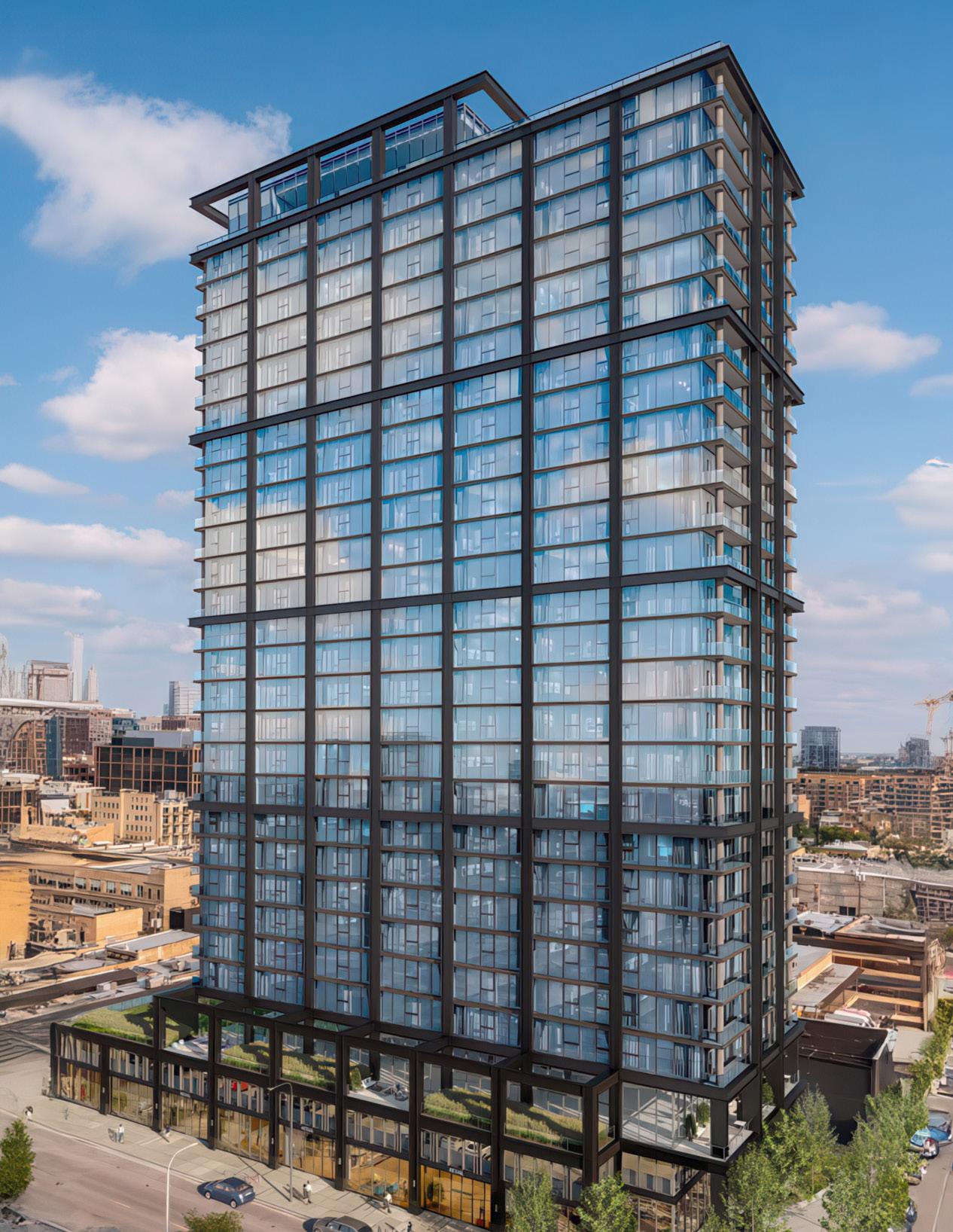

CHALLENGING THE Narrative
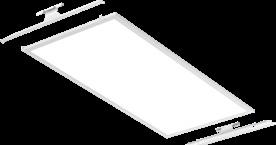

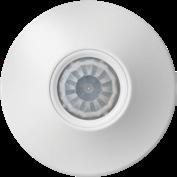
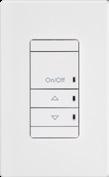


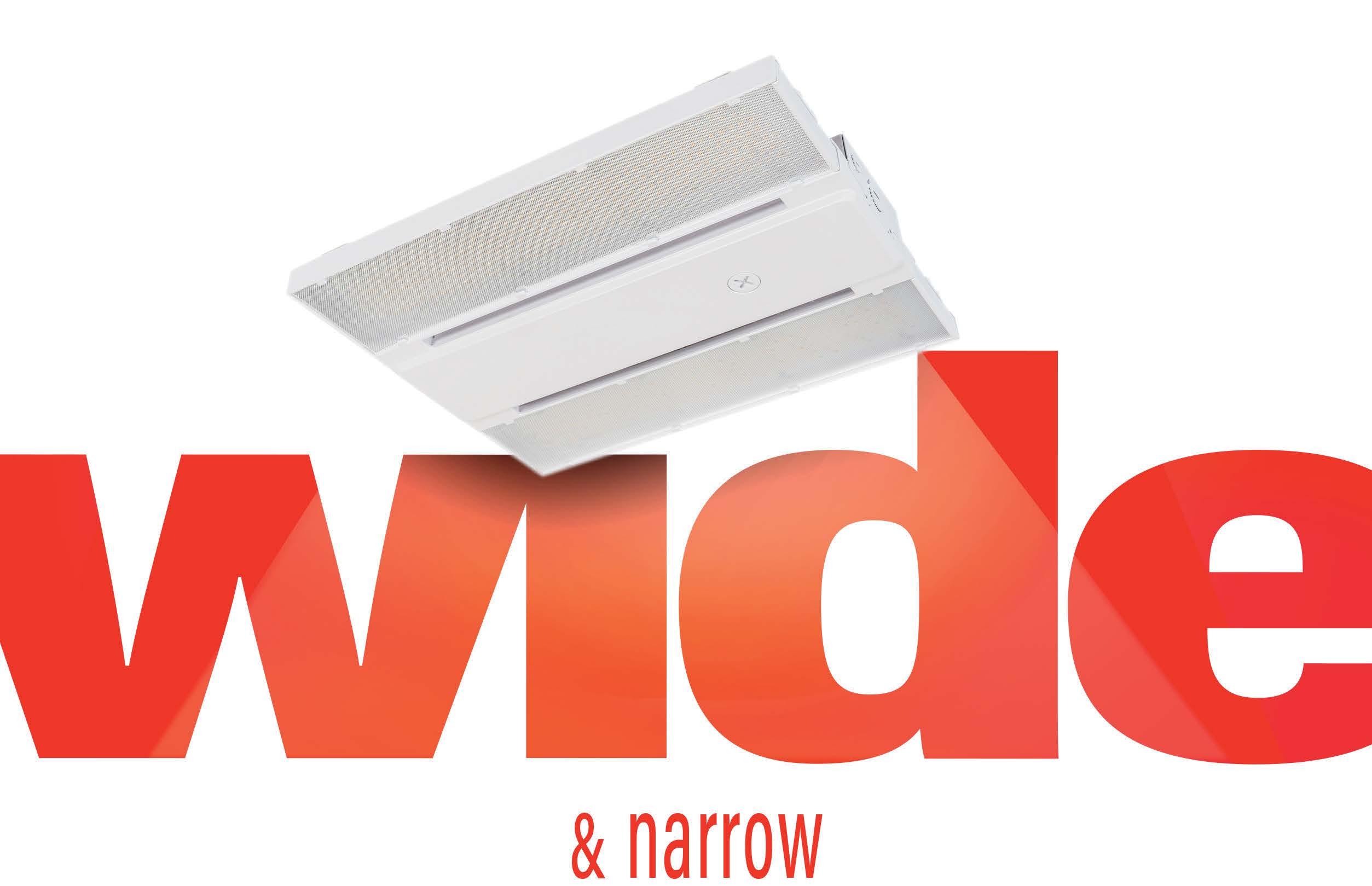
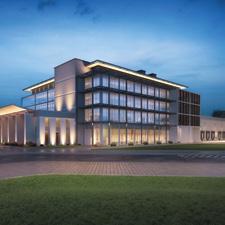

No need to choose. XFit High Bays are now available with OpticSwap. Both linear and round models give you multiple lenses with each fixture, so you can pick from wide beam angles to illuminate high shelves, narrow beam angles for tight aisles, and whatever’s right for the open spaces in between. Either way, the tool-free optic lenses change in seconds, and you get precisely targeted light with fewer fixtures.
You get it all with Keystone.
Tool-free OpticSwap Technology
Power and Color Select
Easy Screw-in Motion Sensors
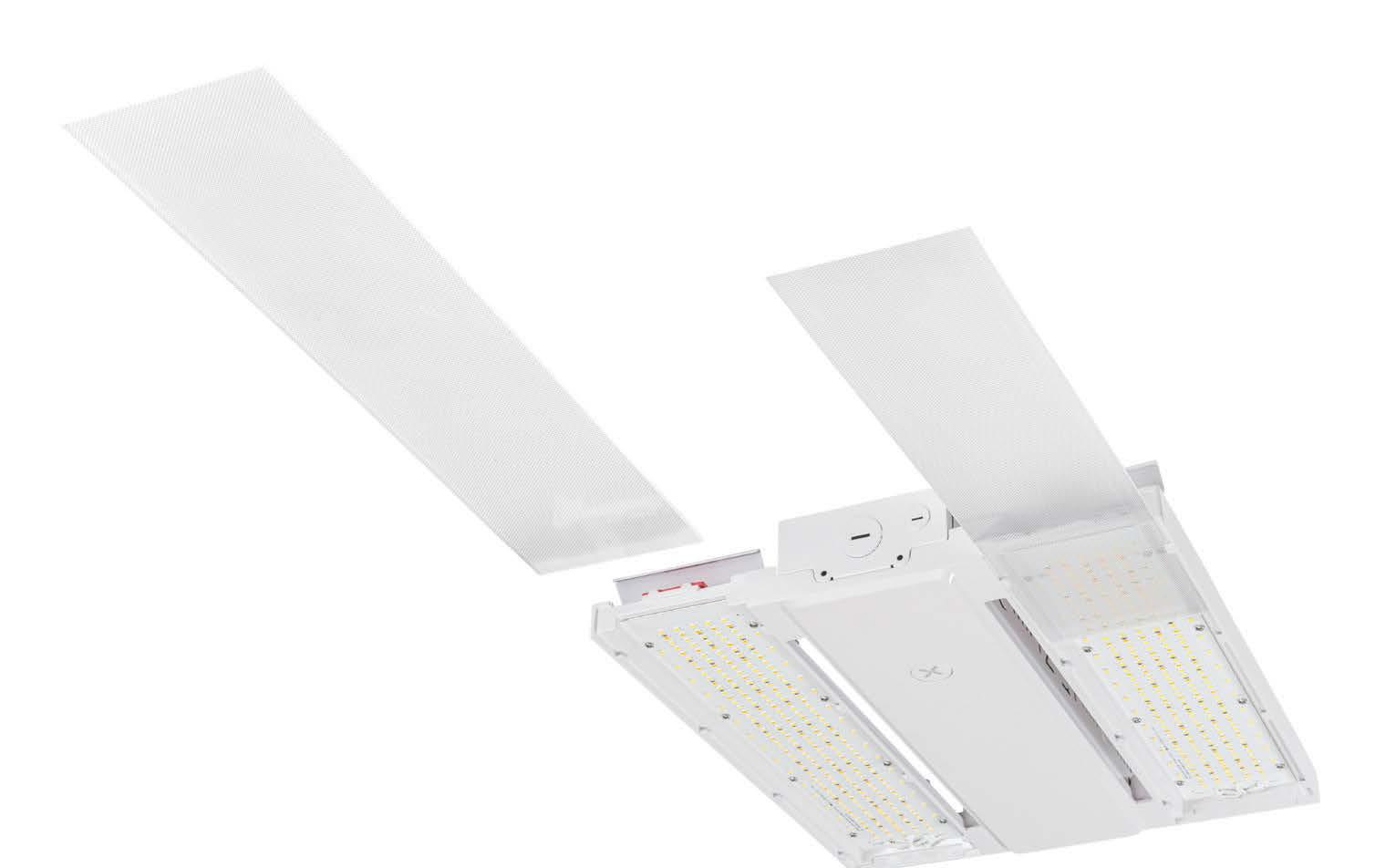

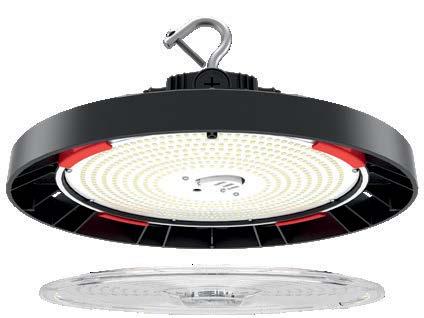
SHIRLEY COYLE
Shirley Coyle has worked in the North American commercial lighting industry for several decades, holding various leadership roles. A Past President of the Illuminating Engineering Society (IES), Shirley is very active in the lighting community, including participation on lighting standards development.
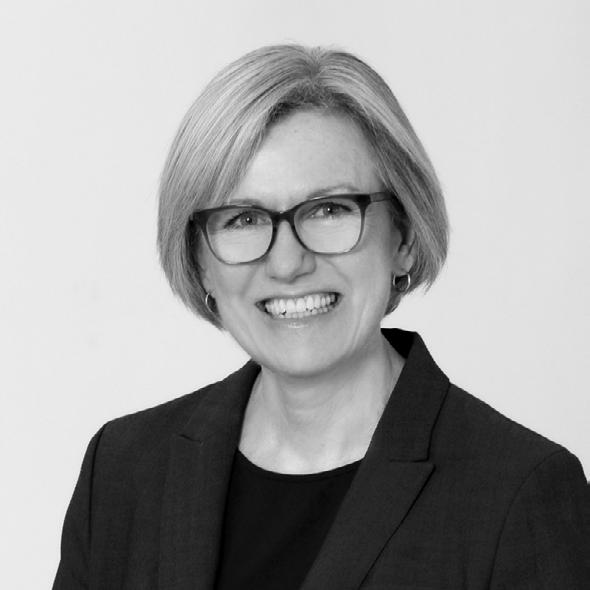
Editor and Publisher
Randy Reid
Assistant Editor
Parker Allen
VP, Associate Publisher, Advertising
Cliff Smith 917.705.3439
Production and Design Coordinator
Angie Hullfish
CONTRIBUTORS
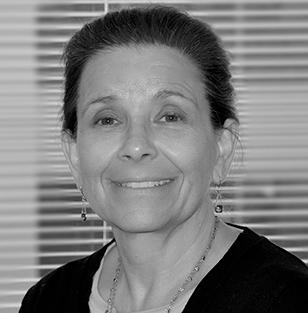
RITA RENNER
Seasoned in clean tech and energy efficiency, Rita has held senior marketing and outreach positions in the lighting controls industry, including WattStopper and Echelon. As a consultant, she has served clients in pre-IPO lighting controls companies, electrical/data construction, professional services firms, and policy making organizations.
Art Direction
Seraphine Morris
Lighting Management & Maintenance (LM&M) publishes information for the benefit of its members and readers. The sponsor (NALMCO), publisher and editor of LM&M cannot be held liable for changes, revision or inaccuracies contained in the material published. For detailed information on the products, programs, services or policies covered, it is recommended readers contact the appropriate person, company agency of industry group.
LM&M is published by EdisonReport (ISSN 2835-821X). Statements and opinions expressed in articles and editorials in LM&M are the expressions of contributors and do not necessarily represent the policies or opinions of the EdisonReport. Advertisements appearing in the publication are the sole responsibility of the advertiser.
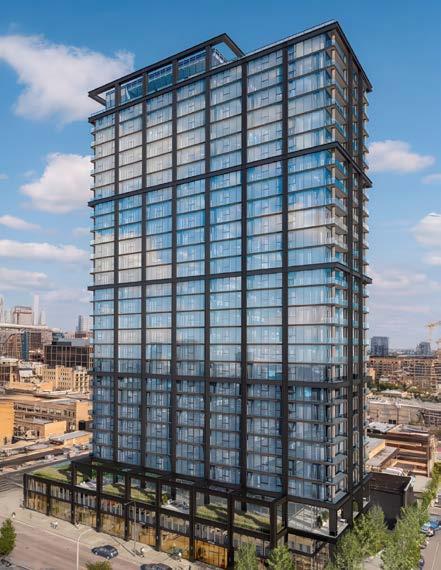
The Elizabeth Chicago Photos courtesy of Avi Mor
BOARD OF DIRECTORS
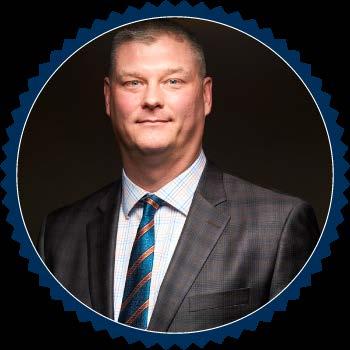
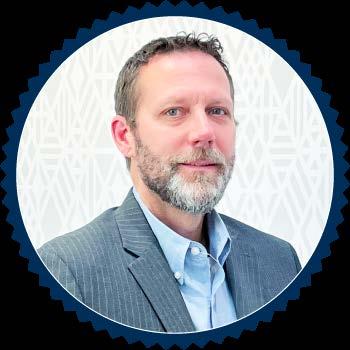
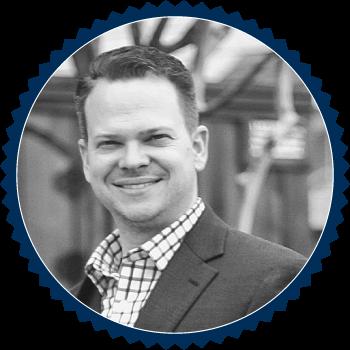
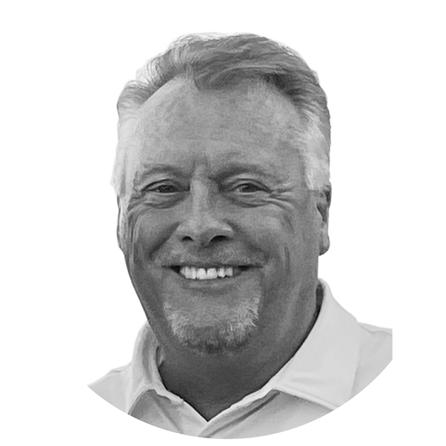
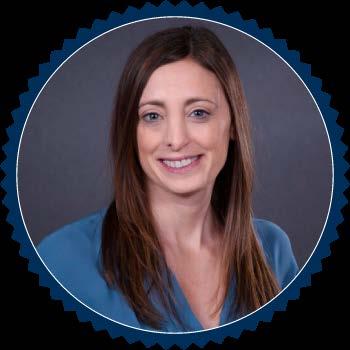
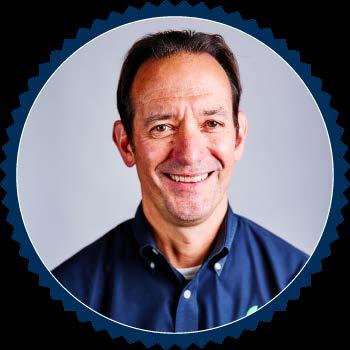
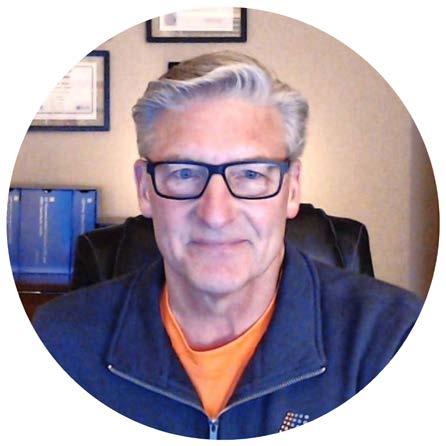
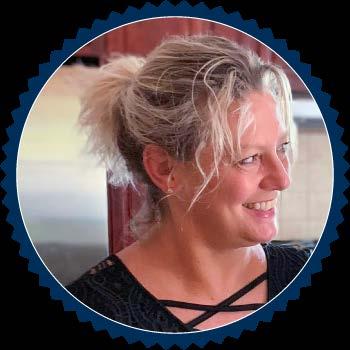
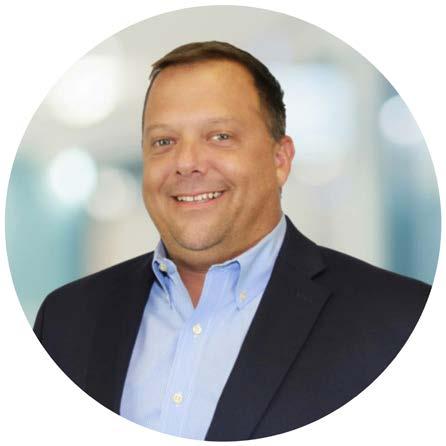
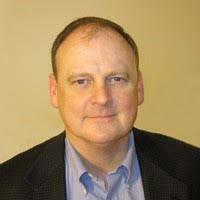
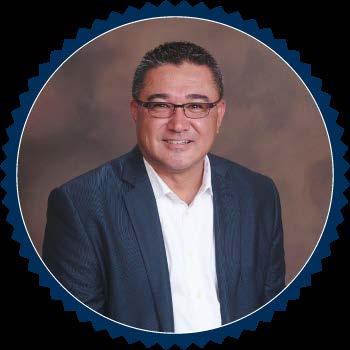
President's MESSAGE
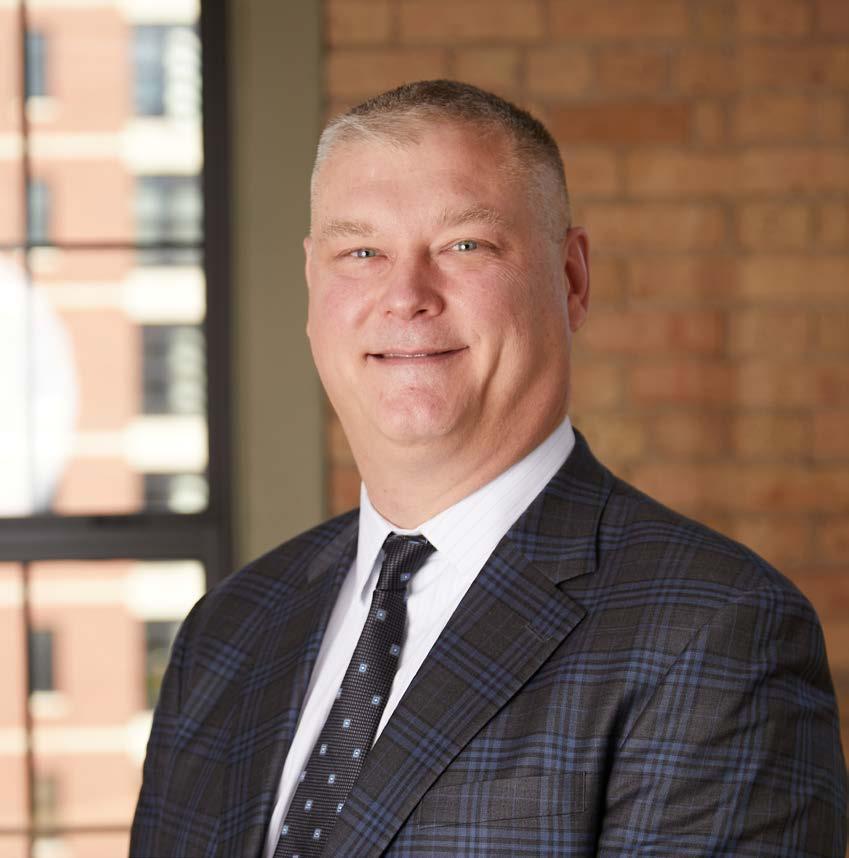
Dear
members and industry colleagues,
ERIK J. ENNEN CLMC, CLA, CLCP, CSLC, CLEP, C-GUVMP
I am honored to address you today as we continue our shared journey toward advancing the lighting industry. Our work together has made a significant impact, and I am incredibly proud of all that we’ve achieved.
The world of lighting is evolving at a rapid pace, driven by technological innovations, sustainability efforts, and the growing demand for energy-efficient solutions. As we look to the future, we are not just participants in this change – we are leaders. Your expertise, dedication, and passion for excellence are what set us apart as an organization, and they will continue to shape our path forward.
In the year ahead, we remain committed to fostering collaboration, supporting our industry’s growth, and pushing the boundaries of what lighting can do for people and the environment. We will continue to advocate for sustainable practices, training, certifications, and welcome opportunities for growth and development within our industry.
Together, we can light the way to a brighter, more innovative, and more sustainable future. Thank you for your continued hard work, dedication, and vision.
Here’s to the future we are creating together.
Warm regards,

The RCH Architectural LED Channel improves performance and reduces glare:
• Selectable wattage & CCT
• 160 lpW
• 0-10V dimming standard
• Commercial, industrial, institutional and retail applications
• 3 low-glare lens options, with no pixilation
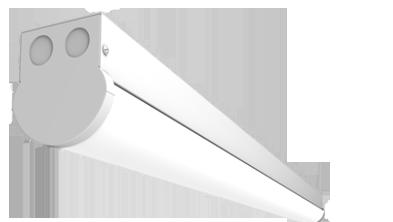
• Sensor-ready plug-n-play bracket & Bluetooth networking
From the EDITOR
Little Pink Houses
Trying to keep up with the new administration’s executive orders has been a dizzying experience, and I can’t help but think John Mellencamp may need to rewrite a few of his lyrics:
"…Go to work in some high rise, and vacation down at the Gulf of America, Ooh, yeah…?"
Oh no! That just doesn’t have the same ring to it.
When I first heard the then-president-elect discussing the idea of renaming the Gulf of Mexico, I assumed it was just rhetoric. I had no idea it would be implemented on day one. Clearly, the administration is sending a strong message to Mexico.
The administration briefly enacted and then paused a 25% tariff on all imported goods from Mexico and Canada. Effective 4 February, a 10% tariff on all imported goods was imposed on China.
What Does This Mean for the Lighting Industry?
In his 9 January investor call, Neil Ashe, Chairman, President, and CEO of Acuity Brands said:
"We’ve had a lot of customers asking us if we’re going to increase prices and when because of tariffs. That conversation sort of died down. I’d say the expectation from our customers is that we will react accordingly when that happens. And we’ve set the expectation with them that nothing’s happened, so there’s nothing to talk about. And if something does happen, we will be prepared, and we will act accordingly.”
Lighting manufacturers will likely weather the storm by employing the same strategy they did during the last round of tariffs—passing the increased costs onto electrical distributors, with a little extra margin added in. In turn, the electrical distributors will adjust their pricing, also with a little extra margin, and push the cost increases down to contractors.
That brings us to the big question: Will our audience of lighting maintenance and management contractors absorb or transfer these rising expenses? Given the delicate balance of pricing and competition in the industry, I am not sure, and I would love to hear your opinion. Write me at editor@nalmco.org
A Perfect Storm of Challenges
With the potential tariff hikes looming, the importance of Build America Buy America (BABA) and the Buy American Act (BAA) is greater than ever. Contractors and manufacturers must also contend with an already fragile Chinese economy and its ongoing impact on global supply chains. Given these factors, it might be the perfect time to seriously consider finding reliable U.S. suppliers for luminaires and retrofit kits.
How the situation plays out over the course of the year remains to be seen, and I won’t be surprised by any outcome. After all, I never dreamed we would be planning a vacation down at the Gulf of America. Ooh, yeah.

FROM THE EDITOR


2025 SPRING SEMINAR
MARCH 4-6, 2025 • CHICAGO, IL
Explore innovative practices with expert speakers, tour our host facility Acuity Brands for hands-on experience, and network with the best of the best lighting professionals at the 2025 Spring Seminar!
At the Spring Seminar, you have the opportunity to attend 10 Learning Lab sessions on Wednesday, March 5. Learning Labs are hosted by manufacturers/ distributors and designed to help you learn more about a specific lighting topic.
Our faciliy tour and receptions will give you an opportunity to network with other professionals in the industry!

SCAN TO REGISTER TODAY!
Thank you to our sponsor!

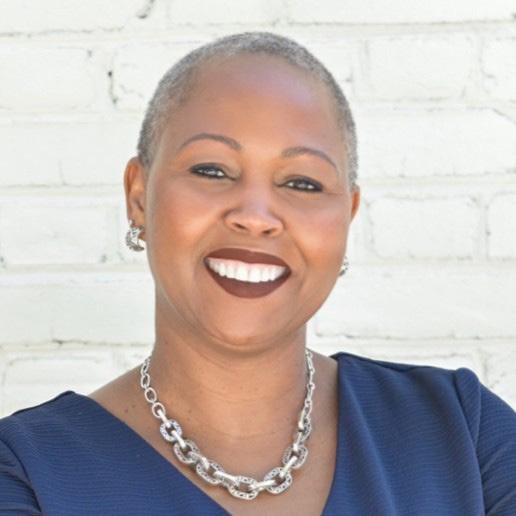
TANYA HERNANDEZ
KEYNOTE SPEAKER
U.S. Trade Policy: A Lighting Perspective
The address will include a review of the new United States Administration’s trade objectives as they relate to lighting, including the anticipated direction of tariffs, incentivizing domestic manufacturing, and regulations impacting product domestic content requirements, e.g. Build America Buy America (BABA) and Buy American (BAA).
Tanya Hernandez is Vice President of Goverment and Industry Relations at Acuity Brands. She actively monitors, evaluates, and influences legislative and regulatory activities impacting lighting, lighting controls, building management solutions, and location-aware applications. She regularly consults on proposed rulemakings while building and nurturing relationships with varied entities including industry associations, regulatory bodies, customers, suppliers, utilities, program specficiation, and standards development organizations.
Exploring HVAC and Lighting Controls
Integration
and Interoperability:
mwConnect Creates a Demonstration Showcase
By Rita Renner
In 2024 mwConnect, an industry-leading provider of Bluetooth® wireless mesh lighting controls, committed to explore the possibilities of integrating lighting control with HVAC by creating a testbed in its Sacramento headquarters. The company built a unique showcase for market stakeholders by upgrading its lighting systems, deploying wireless mesh networked lighting controls (NLC), and integrating the facility’s HVAC control with the new NLC controls.

BACKGROUND
The goal for the project team was to transition existing control zones, used for proof of concept and mesh testing primarily, to create defined mesh systems each showcas- ing advanced controls with HVAC integration.
CBECS, a national survey1 that collects information on the stock of U.S. commercial buildings (including their energyrelated building characteristics and energy con- sumption data), classifies most small- and medium-sized business facilities as being under 25,000 feet2 in size, and accounting for 30% of all commercial buildings. The mwConnect offices cover 10,000 feet2, with anoth- er 15,000 feet2 dedicated to production and warehous- ing. The Sacramento, CA. location houses 30 employees working primarily five days a week, 8 am-5 pm schedules performing administrative and engineering tasks. Prior to the retrofit, the site used a variety of light sources, including fluorescent, LED, CFL, halogen,
and incandes- cent lighting. Localized groups of meshcontrolled light- ing from earlier proof of concept projects existed, as well as standalone PIR occupancy sensors, and standalone wall switches. The team, led by Executive Vice President Stephen Zhou, proposed laying out 88 lighting fixtures, embedded with DALI D4i drivers and D4i wireless sen- sor controllers, and six HVAC units into three identifiable mesh networks with each network using to its own sep- arate gateway. This would facilitate the team’s ability to measure separately specific issues (i.e., drop off and la- tency) for each mesh network at scale.
DESIGNING THE PROJECT
The team set up multiple strategies to control the space. Tunable white, circadian lighting, dimming, high end trimming, scheduling, daylight harvesting, occupancy/vacan- cy sensing, and power metering were all incorporated. Using Signify and Osram DALI D4i drivers, the LED lumi- naires
AND AFTER
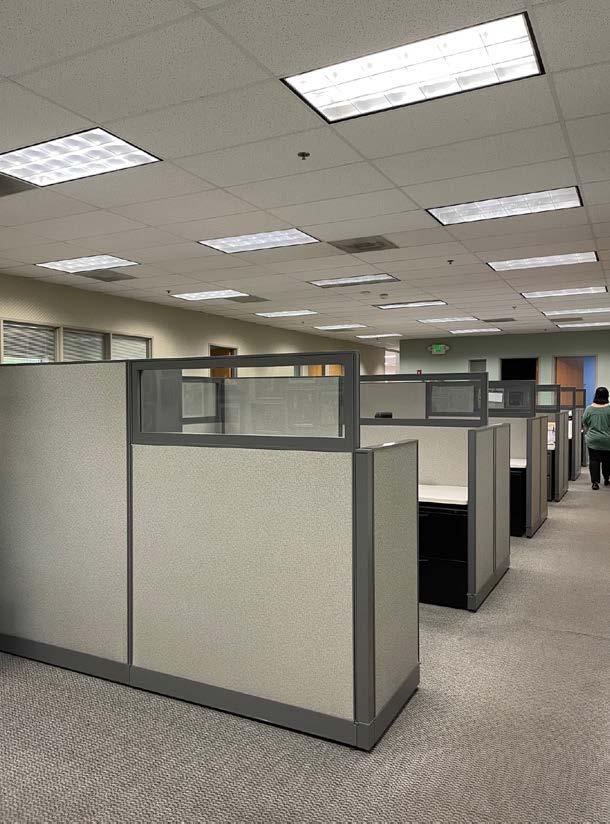
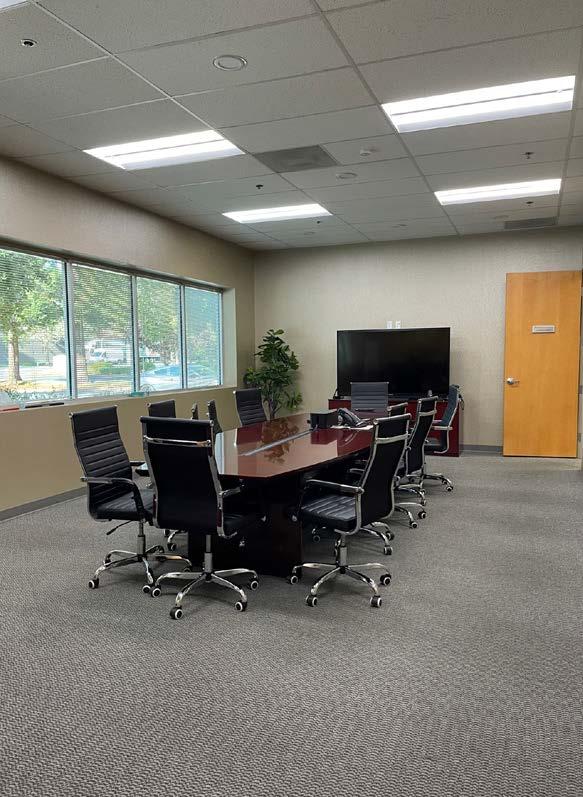
featured combinations of single channel driver plus wireless controller, and dual channel tunable white driv- ers plus wireless controllers. Showcasing human-centric lighting was important, so a large conference room was selected for implementation.
The team developed a different strategy to include integrated HVAC control to the project. Using WIFI, the team leveraged the use of set-points in integrating with the lighting control mesh networks.
One mesh network utilized the mwConnect TruBlu Blue- tooth NLC protocol, comprised of forty-four fixtures in private offices, break room, foyer, and open floor plan areas. Each luminaire incorporated wireless mesh sen- sor-controllers (PSC-ZBD-I-11N-BLE-SR) for luminaire level lighting control. Certain offices and common areas were also outfitted with wireless kinetic wall switches that require no wiring or batteries. Using high-end trim (to 70% output) and an occupied dimming level of 55%, significant energy savings were realized, often exceeding 60% (approximately 30 watts per fixture beyond the 46 watts per fixture attributable to the fluorescent to LED conversion). In the breakroom, which often doubles as an impromptu meeting room, the team used a 4-button wall switch to facilitate scene control in that space. With large plate glass windows along the perimeter wall, the space was ideal for multiple zones. The project team decided to create 4 zones: two zones specifically for daylighting plus occupancy, and two for occupancy alone.
The team designed a second mesh network using the Casambi protocol. For this network, the team deployed forty-four fixtures across a large conference room, private offices, an open office area, library, server room, print cen- ter, and a transition area to a warehouse production area. Project participants replaced the original troffers (fixtures using three F32T8 lamps or three-lamp F28T5 fixtures) with 50w 2x4 LED fixtures, and incorporated wireless mesh sensor-controllers (PSC-ZBD-I-11N- BLE-CB). In specific spaces, the team decided to deploy fixture-integrated WCM-200 controllers instead of sensor-controllers. By installing a 4-button wall controller and dual channel wireless controller, occupants
in an engineering office without windows could adjust the new tunable white fixtures for their comfort. By enabling access of the tunable white fixtures in the large confer- ence room with the scheduling features of the Casambi APP, the design team created a circadian profile developed specifically for the office’s west coast location. Activat- ing at 6 am with a 2400K CCT, the system gradually cools the CCT spectrum to 6000K CCT through mid-afternoon when the con- trol profile ramps back to the warm 2400K until 8 PM when the network executes an automatic shut- off (see images below). The control scenario for this large conference room also leverages occupancy sensing and daylight harvesting to maximize energy savings.
Time of Day Color Temperature
6:00 AM
K 7:00 AM
K 8:00 AM
K 9:00 AM
K 10:00 AM
K 12:00 AM
K
2:00 PM 6000 K 4:00 PM 5500 K 2:00 PM 4000 K 8:00 PM 2400 K
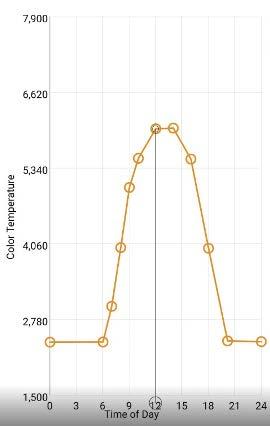
Typical of most medium-sized commercial buildings of this early 2000s vintage (it was built in 2001), the original HVAC system used zoned Roof Top Units (RTU) and stand- alone hardwired thermostats. Of the five roof top units, one utilized two thermostats to control temperatures in a production area and a training room. The team replaced all the thermostats with wireless mesh enabled models and connected them to an edge gateway. Traditionally the HVAC system might have “business hours” heat/cool settings, and “non-business
hours” heat/cool settings. The Sequence of Operation was updated from this legacy “Set Point” approach with only weekday and weekend settings, to include operation using data from occupancy sensors. The team created a “cascade” set point program using this additional occupancy data to establish an operating range across an “Occupied/Business hours” and “Occupied/ Non-business hours” spectrum with higher heat and lower cool threshold settings. This narrower, more constant tem- perature range focuses on increasing
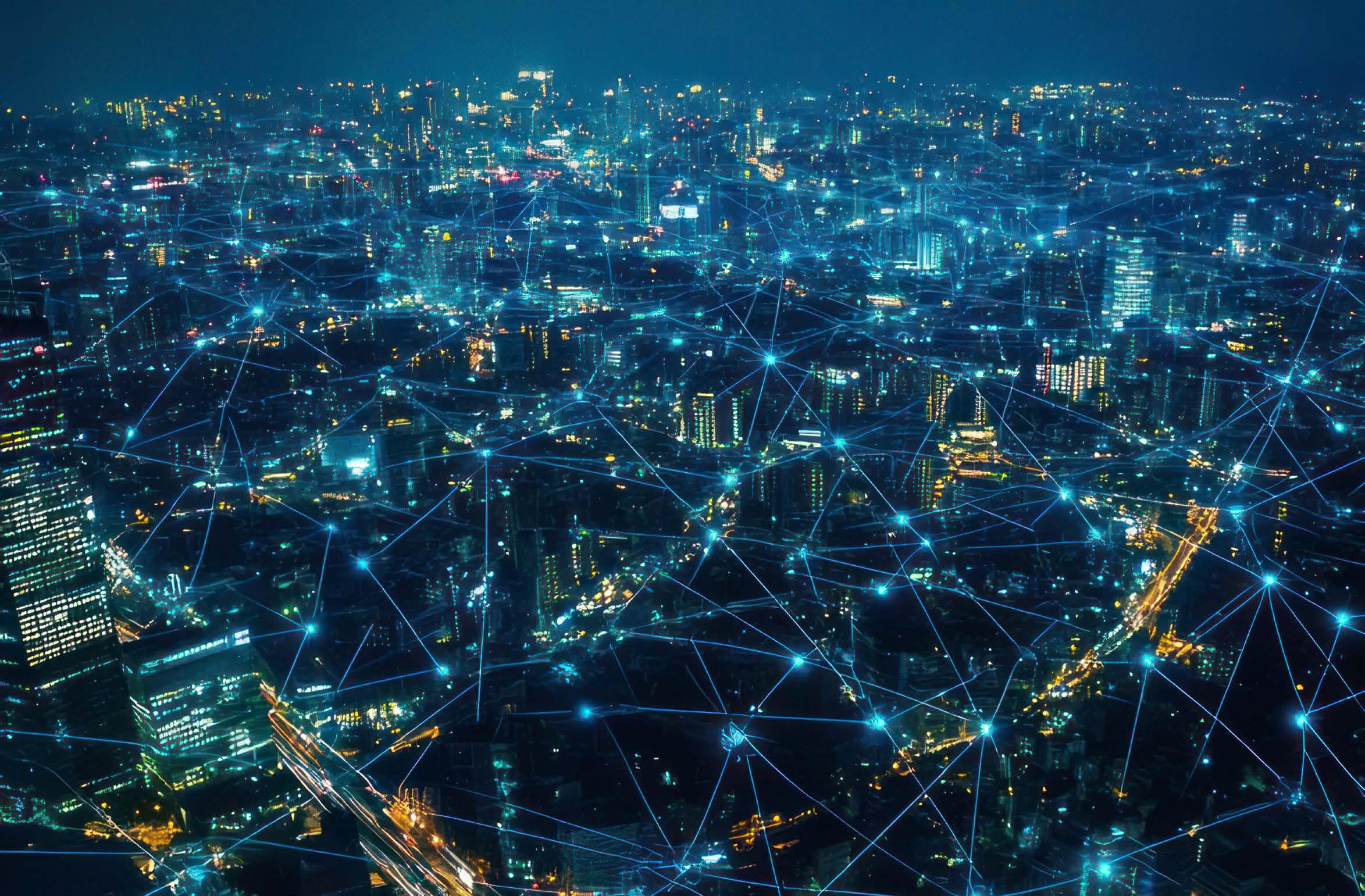
occupant comfort. The team continues to log data from the occupancy sensors in an ongoing process to refine the timeof-day ranges in or- der to capture additional energy savings. Occupancy Based Controls (OBC) Studies3 have shown weekly HVAC savings of 17-24% are possible.
In addition to the 88 new and retrofitted luminaires outfitted with DALI LED drivers, the project used 93 sensor-controllers and controllers, and 17 wall switches, streamlining the communications between luminaires and mesh devices.
PROJECT RESULTS
Layering multiple strategies, such as high-end trim plus setting a dim level, or leveraging occupancy data to refine the HVAC setpoints, accelerated energy savings, in some cases above 70%. For instance, operating the legacy lighting averaged 8280 watts. After the lighting and controls retrofit, the upgraded systems operated using 2588 watts, a 69% reduction. The 5722 watt reduction in operation calculated out to
Project Participants

BEFORE AND AFTER
a -45kWh per day reduction and a -11,900 kWh reduction annually (using a typical 8/5 work schedule).
The total materials cost was less than $24,000 and included all gateways and thermostats. Total project costs, including labor, were just under $39,500. Estimated annual energy savings from lighting retrofits is $1,646. The site is currently running before and after metering readings to establish the net reduction from the additional 84 occupancy sensors.
Financial incentives that would be possible include potential rebates of $2,220.00 from the local electricity provider (Sacramento Municipal Utility District (SMUD), and poten- tial tax credits of $15,750 (the 179D Commercial Buildings Energy Efficiency Tax Deduction4 was updated in 2020, and such a building upgrade might qualify for tax credit treat- ment).
The fixture retrofit converting lights from fluorescent to LED, combined with the installation of occupancy sensors as a strategy alone, saves 8.3 metric tons of CO2 emis- sions each year. P
mwConnect
Stephen Zhou
Tony Garcia
Cheng Saetern
Kuljot Dhami
Contractor/Installer
Edward Mazyck
CEO
TMG Energi Solutions, Inc.
References
1. S. Energy Information Administration, 2018 Commer- cial Buildings Energy Consumption Survey, Table B12 Part1.
2. U.S. Department of Energy, Office of Energy Efficiency & Renewable Energy, 179D Commercial Buildings En- ergy Efficiency Tax Deduction.
3. Meng Kong , Bing Dong , Rongpeng Zhang , et al. HVAC Energy Savings and IEQ for Occupancy-Based Control by Side-by-Side Experimental Study. TechRxiv. June 14, 2021.
4. U.S. Department of Energy, Office of Energy Efficiency & Renewable Energy, 179D Commercial Buildings En- ergy Efficiency Tax Deduction.
The goal for the project team was to transition existing control zones, used for proof of concept and mesh testing primarily, to create defined mesh systems each showcasing advanced controls with HVAC integration
DECODING ENERGY EFFICIENCY
By Parker Allen
Navigating ASHRAE 90.1 and IECC
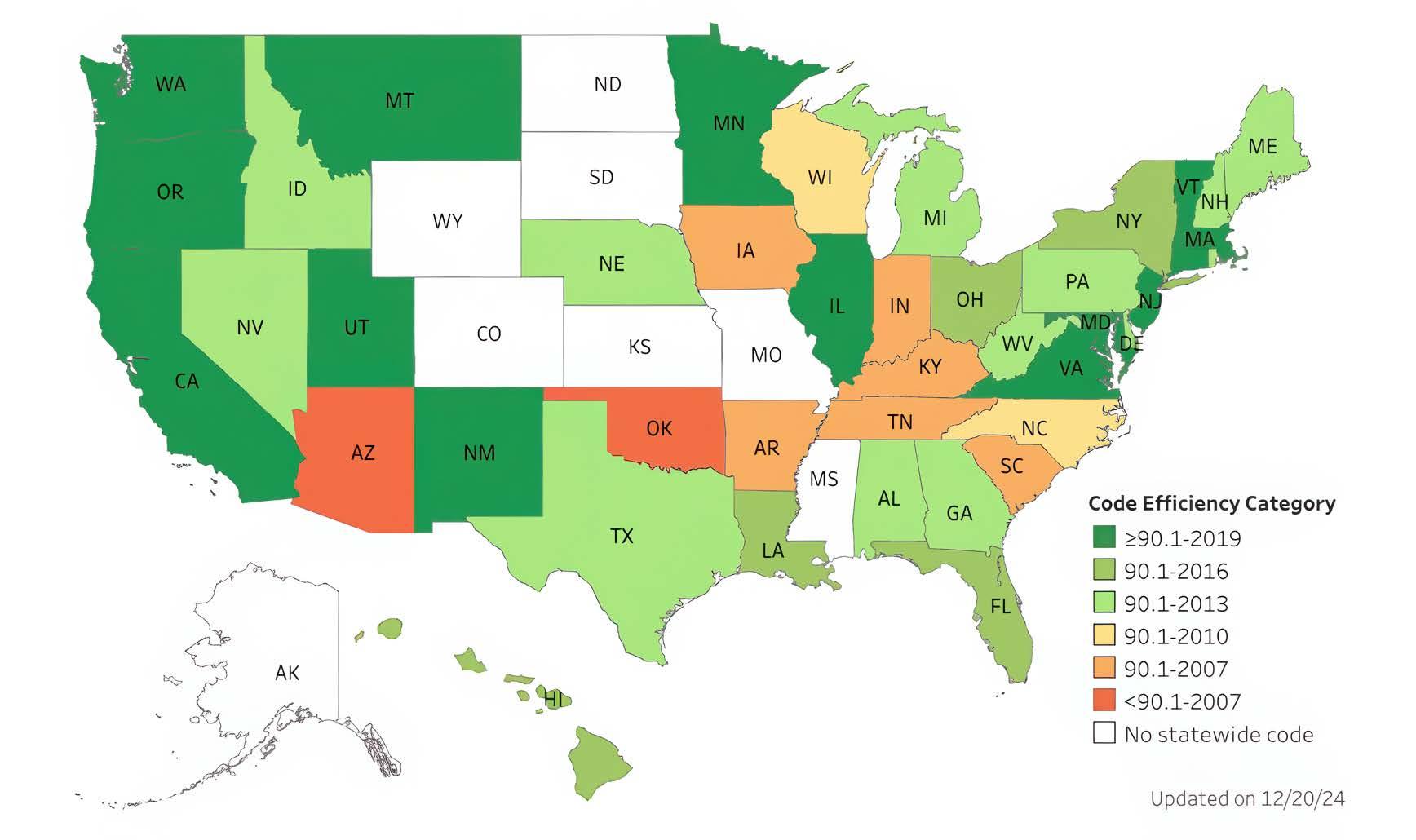
Caption: State level adoption of ASHRAE 90.1
Source: State Portal, Office of Energy Efficiency and Renewable Energy4
One of IECC’s most significant features is its C406 credits, which allow designers to select from a variety of efficiency measures to meet the energy code’s requirements.3 This flexibility makes IECC an appealing option for many states. However, while IECC is simpler in structure, it is often seen as less stringent than ASHRAE 90.1, which is why some jurisdictions, particularly in the Pacific Northwest, have chosen ASHRAE as their base energy code i
ADOPTION AND CUSTOMIZATION
Across the country, states have adopted different versions of ASHRAE 90.1 and IECC, and they amend these codes to suit regional needs. O’Neil, focusing on the Pacific Northwest, discussed the variability among states in the region, which serves as an example of the variability nationwide.
Washington, he pointed out, is widely regarded as one of the most stringent states when it comes to energy codes. It bases its energy regulations on the 2021 IECC but adds numerous state-specific amendments. Oregon, on the other hand, uses ASHRAE 90.1 as the foundation of its energy code, with several amendments unique to the state. Both Idaho and Montana use the IECC as their base code, but with varying degrees of customization. Idaho references the 2018 IECC with amendments, while Montana adopted the 2021 version. Montana also amends its version of the IECC, adding provisions that cater to the unique needs of the state.i
The takeaway is that, in addition to familiarizing yourself with the codes in general, specific knowledge of your state’s code adoption and additional provisions is paramount.
SIMILARITIES AND DIFFERENCES
Although ASHRAE 90.1 and IECC differ significantly in their technical complexity, they share many similarities. Both codes offer prescriptive and performance paths for compliance, and they require designers to meet energy-efficiency standards across multiple systems, including HVAC, lighting, and water heating. Both codes also rely heavily on modeling to establish compliance under the performance path, allowing designers to trade off one efficiency measure for another.
However, ASHRAE 90.1 is generally considered more stringent. Its technical subcommittees, which include experts in various fields such as HVAC and lighting, review and vet proposals before they are added to the code. This process ensures that the code is both comprehensive and technically sound. In contrast, the IECC allows for more public participation in its amendment process. Proposals can be submitted by anyone, making the code more open but potentially less rigorous ii
As referenced earlier, one notable feature of IECC is its additional credits system (C406), which allows builders to choose from a list of energy-saving measures. These measures range from improving HVAC system efficiency to enhancing building envelope performance. Designers must accumulate a certain number of credits to comply with the code, adding an element of flexibility that is not as prevalent in ASHRAE 90.1
THE FUTURE OF ENERGY CODES
The evolution of energy codes is a continual process, with new updates every three years. One of the major trends identified by O’Neil is the increasing focus on performance paths, which allow for greater flexibility in how designers meet energyefficiency goals. Additionally, there is a growing emphasis on energy credits, controls, and more integrated systems.
For example, total system performance ratio (TSPR), a newer feature in ASHRAE 90.1, evaluates the performance of an entire HVAC system rather than its individual components. This approach encourages more efficient system design, helping buildings optimize their energy performance as a whole. Similarly, the IECC is continuing to refine its credit system, focusing on carbon reductions and energy savings across different building types.
Both codes are expected to incorporate more advanced control requirements for lighting and HVAC systems. These controls help manage energy use more effectively by responding to occupancy, daylight, and other factors. In states like Washington, the next iteration of energy codes will likely include more stringent energy use intensity (EUI) targets, aligning code requirements with broader state energy and carbon reduction goals.
CONCLUSION
Building energy codes are crucial to reducing energy consumption, lowering greenhouse gas emissions, and creating more sustainable buildings. ASHRAE 90.1 and IECC are both essential tools in this effort, though their complexity and applicability vary across states. The future of energy codes will likely see continued improvements in building performance, more stringent control measures, and increased flexibility for designers. However, navigating these codes remains a challenge, especially as they become more detailed and integrated with emerging technologies.
For those working in the field of energy efficiency, keeping up with the latest developments in ASHRAE 90.1 and IECC is critical. With new updates on the horizon, these codes will continue to shape the energy landscape of commercial buildings for years to come. P
1 O’Neil, Nick. “Cracking the Codes: The Present and Future of Northwest Energy Codes.” betterbricks. Northwest Energy Efficiency Alliance. https:// betterbricks.com/resources/nwenergycode
2 “Commercial and Residential Building Energy Codes.” U.S. Department of Energy. https://www.energycodes.gov/commercial-and-residentialbuilding-energy-codes
3 “SECTIONC406: Additional Efficiency Requirements.” ICC Digital Codes. International Code Council. https://codes.iccsafe.org/s/IECC2021P2/ chapter-4-ce-commercial-energy-efficiency/IECC2021P2-CE-Ch04-SecC406
4 “State Portal.” U.S. Department of Energy. https://www.energycodes.gov/state-portal
5 “State Portal.” U.S. Department of Energy. https://www.energycodes.gov/state-portal
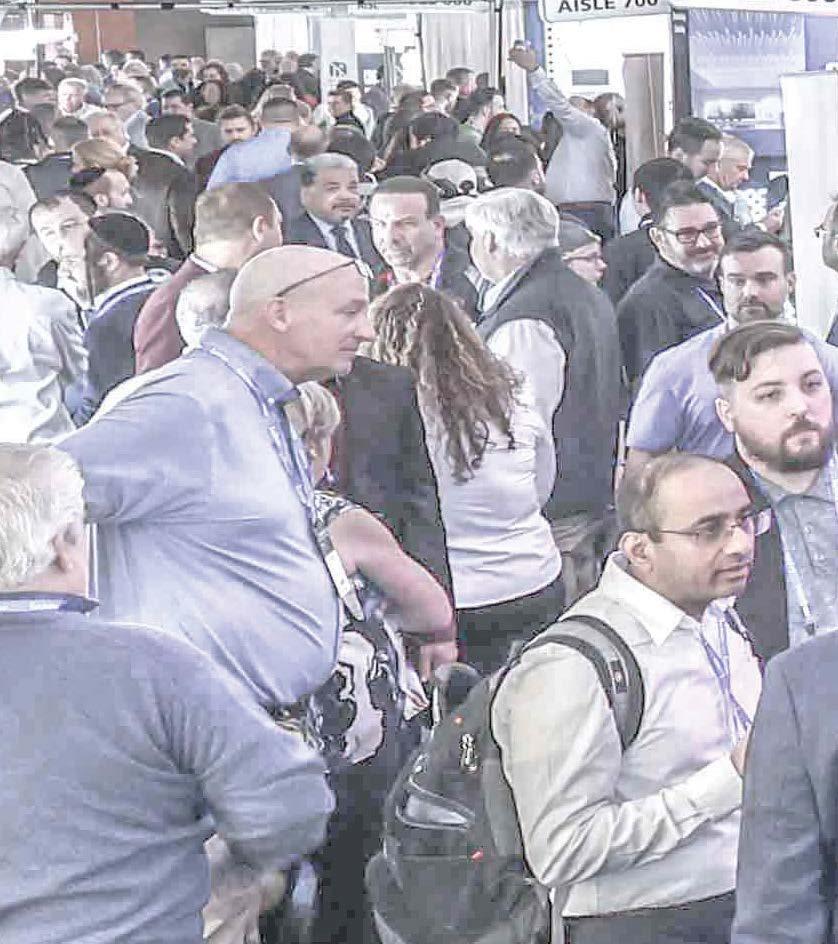
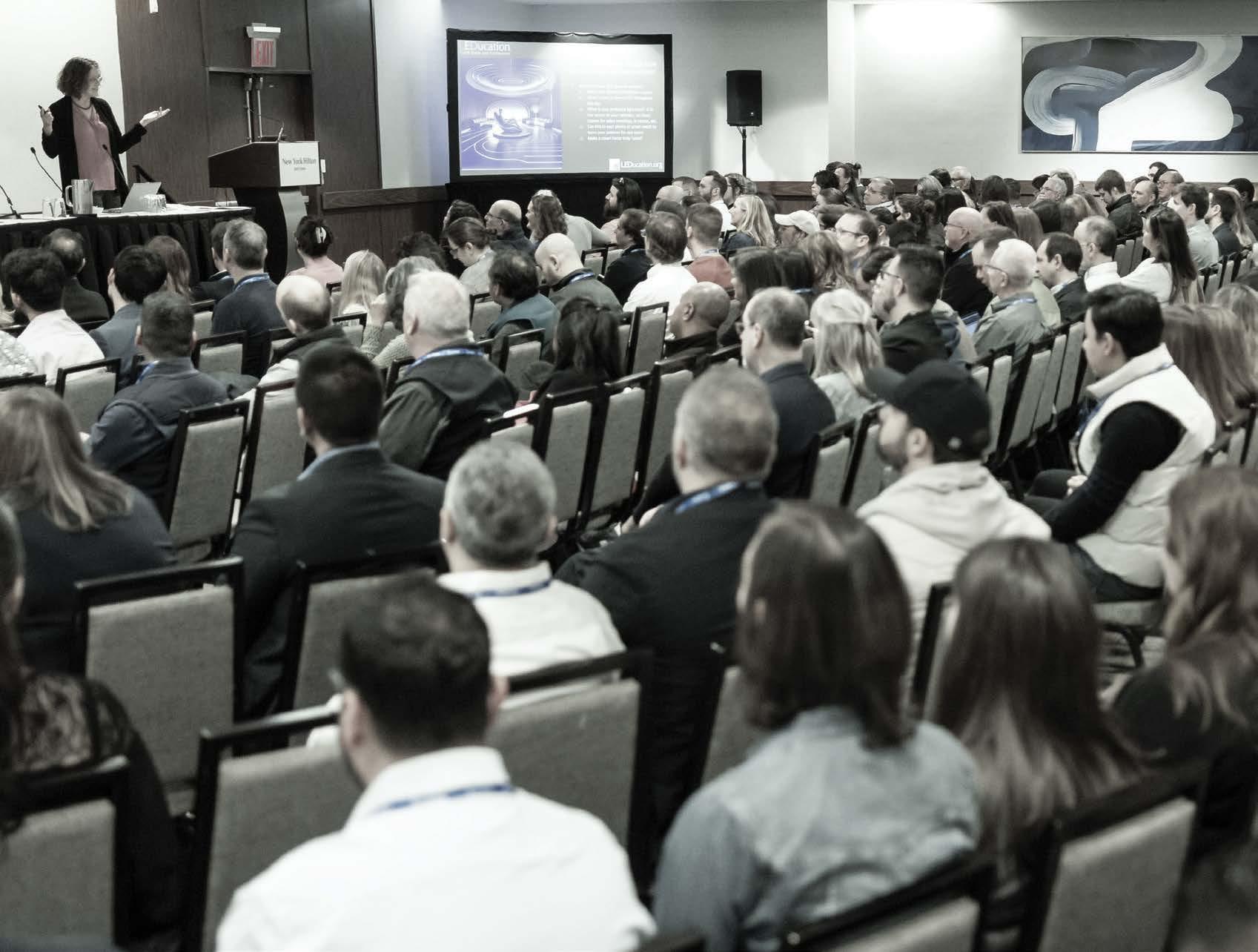
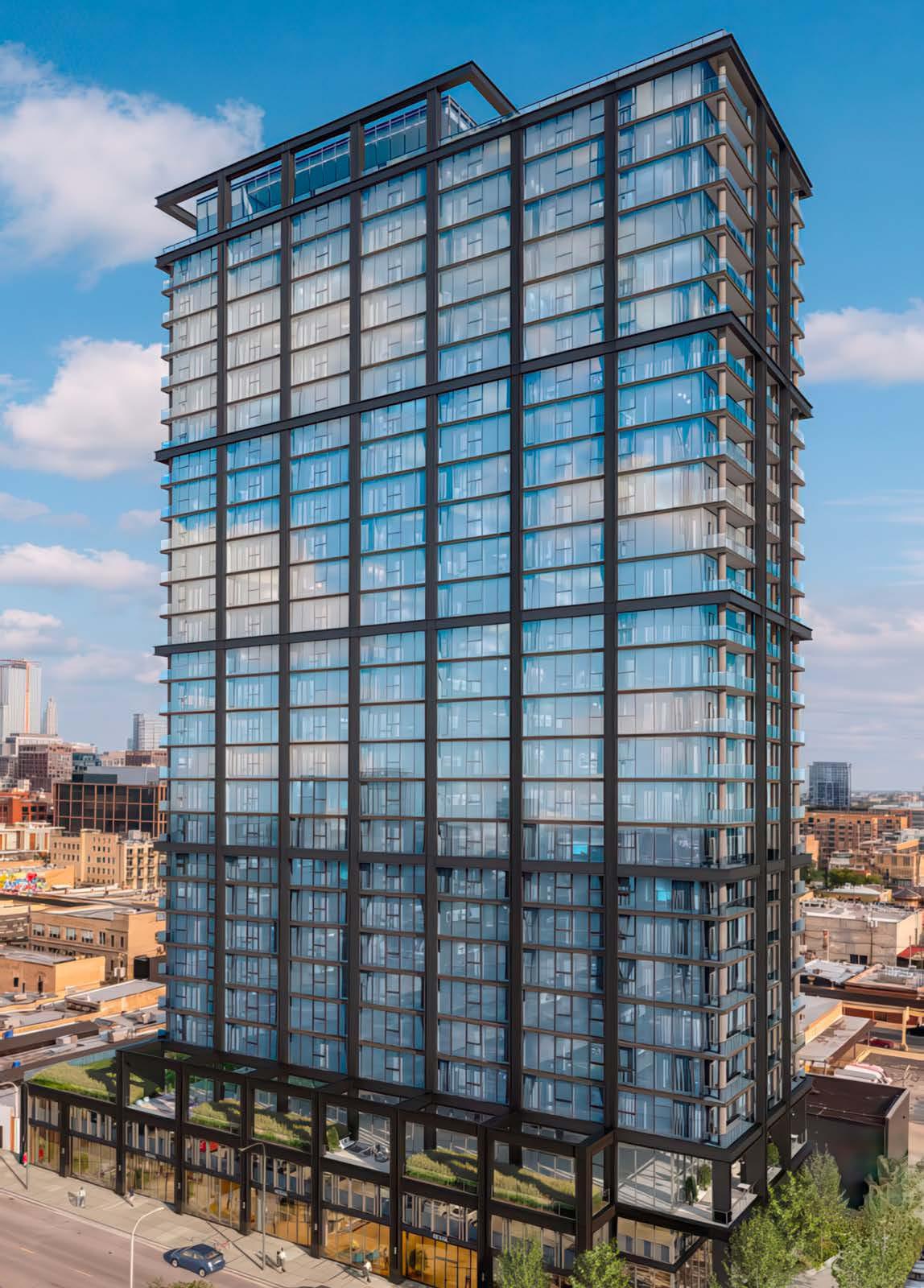
The Elizabeth, just west of the Fulton Market District in the heart of Chicago.
Challenging the Narrative
By Parker Allen
Morlights’ Project Illustrates the Benefits of DALI Over Traditional Controls
Traditional 0-10V dimming systems have long held a dominant position, often cited as the most cost-effective solution. However, a recent project by Morlights at The Elizabeth, a luxury residential high-rise in Chicago, challenges this conventional wisdom by illustrating that DALI (Digital Addressable Lighting Interface) controls not only deliver superior performance but can
also be more cost-effective.
The team at Morlights undertook the lighting design for this project, incorporating DALI rather than a dimming system. The project involved 140 zones of control across three floors of common spaces, including the lobby and amenity areas.
Images courtesy of Morlights
Despite resistance from other project decision-makers who claimed that 0-10V would offer cost savings, a thorough bidding and pricing exercise revealed otherwise. A detailed side-by-side comparison of DALI and 0-10V costs demonstrated that DALI proved to be the more affordable option in the long run.
BREAKING DOWN THE COSTS
One of the key revelations of the project was the cost comparison between the two control systems. Initially, the electrical contractor presented an estimate showing DALI to be $1,000 more expensive than 0-10V. However, upon closer examination, Morlights discovered a significant discrepancy in the markups applied to the fixtures – when adjusted for consistent markups, DALI was revealed to be cheaper on a perfixture basis, with 0-10V systems costing $100 more for the entire fixture package.
Furthermore, a deeper analysis showed that the costs associated with wiring, conduit, and labor were lower for the DALI system. This is particularly significant in a city like Chicago, where all wiring must be run in conduit. The reduction in wiring complexity for DALI, compared to the numerous wires required for a 0-10V system, resulted in
substantial labor and material savings.
SUPERIOR CONTROL AND PERFORMANCE
In addition to the surprise of being more cost-effective, DALI offers a range of advantages that 0-10V simply cannot match. DALI systems provide high-quality dimming capabilities with precision and consistency. Unlike 0-10V systems, where control signals can be subject to interference and inconsistent results, DALI’s digital protocol ensures reliable communication between all connected devices, allowing for smooth, flicker-free dimming.
DALI also supports bi-directional communication, which means it can transmit data back to the control system, providing real-time feedback on the status of the lighting system. This feature is especially useful in large, complex buildings where lighting maintenance can be challenging. For example, DALI allows for monitoring of system performance, enabling proactive maintenance before issues arise.
Another advantage is DALI’s scalability. The system can support up to 64 control devices on a single bus, and its flexible wiring topology simplifies installation and
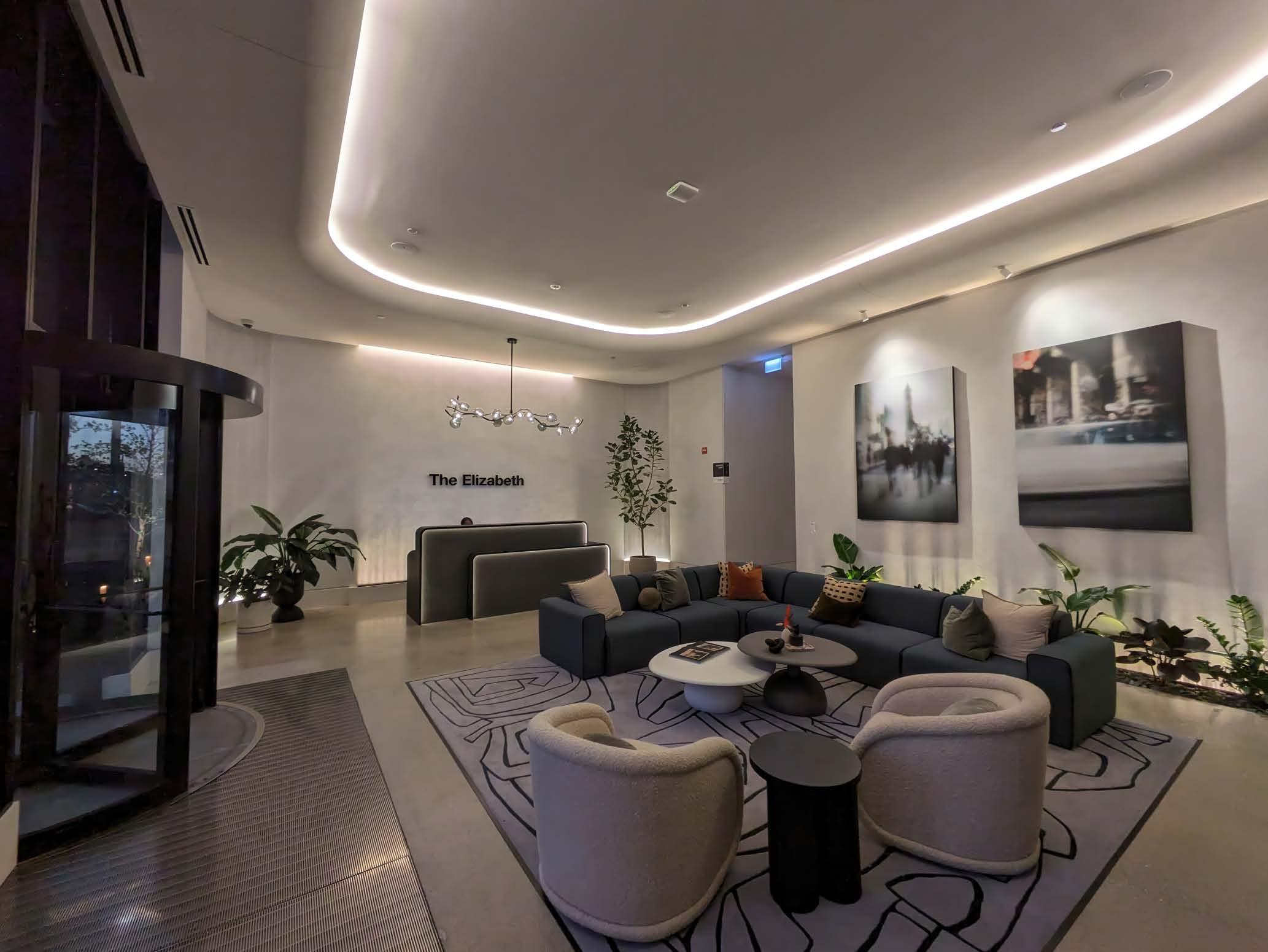
For Sale!
2019 Dodge RAM 5500
This truck is in great shape, Cummings diesel engine, new bucket and joystick controller, 45’ reach, 84K Miles. Will be fully detailed and all lettering removed. Ready for you to put to work for $60K
For more information, please contact dtownsley@del-electric.com
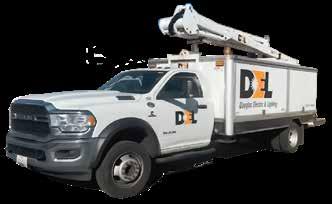
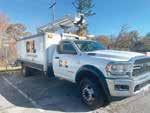
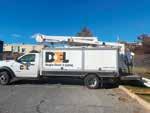
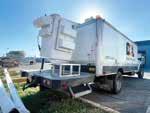
future modifications. This was particularly beneficial for the high-rise project, where the building’s layout and the extensive use of common spaces required a control system that could easily adapt to changes and expansions
A SHIFT IN PERCEPTION
The Morlights team (Avraham Mor, Sean Murphy, Casey Diers) encountered pushback during the early stages of the project. However, the project's final cost analysis debunked the myth that DALI systems are inherently more expensive. In fact, DALI’s ability to reduce installation complexity, wiring needs, and labor costs—combined with its superior performance— position it as a more cost-effective solution for largescale residential projects.
As Mor pointed out, “In North America, we care most about cost. But DALI can do amazing things and, importantly, it’s cheaper. And with LEDs being digital, DALI controls them perfectly.” This case study serves as a testament to how digital controls, like DALI, are not only advancing lighting design but also offering
financial advantages for even the most budgetconscious projects
A BRIGHT FUTURE FOR DALI
The success of The Elizabeth project highlights the potential for DALI systems to become a standard in the industry, especially as more lighting designers, contractors, and building owners recognize its cost-effectiveness and performance advantages. As Morlights demonstrated, DALI not only delivers highquality lighting control but does so at a price point that competes with—and often undercuts—traditional analog systems like 0-10V dimming. For residential high-rises and other large-scale projects, the future of lighting control is digital.
This project sets an important precedent for the industry, showing that innovative lighting solutions do not have to come with a higher price tag. By embracing DALI, designers and contractors can achieve both superior performance and cost savings, making it a win-win for all stakeholders involved. P
WHAT'S NEW

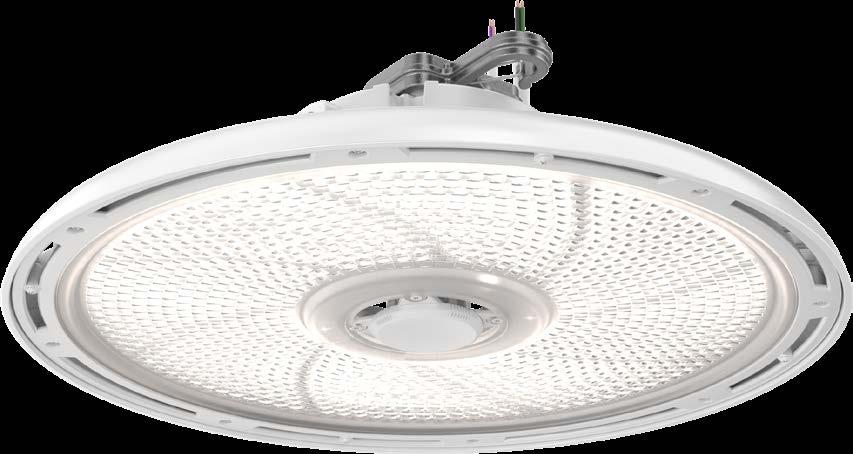
REBL LED HIGH BAY
Lithonia Lighting®'s REBL LED High Bay offers adjustable lumen outputs (12,000–55,000 lumens) and switchable color temperatures (3500K, 4000K, 5000K). Featuring easy installation with a patented flip hook, it provides 360° illumination with a micro-prism lens. The energy-efficient LED design is 70% more efficient than HID technology and includes flexible mounting options and sensor integration.
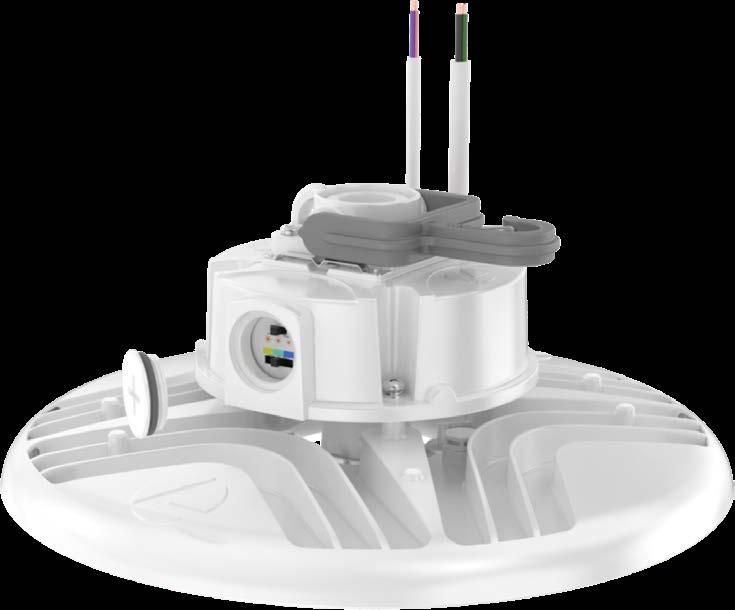

SLIM PROFILE STRIP SELECTABLE
XtraLight’s Slim Profile Strip Selectable an energy-efficient LED luminaire offering lumen packages from 2000L to 6500L, ideal for commercial, industrial, and retail spaces. It features selectable power and CCT, optional sensors, and multiple mounting options, backed by a 5-year warranty.
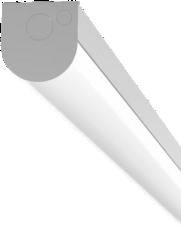
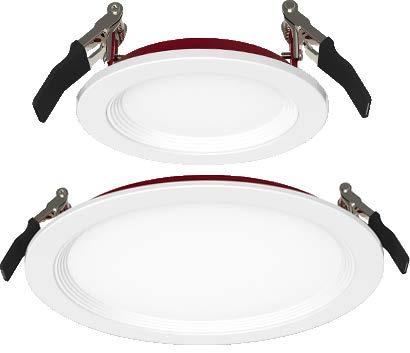

VALUE CLASS NIGHT RING RETROFIT DOWNLIGHT
The Value Class Night Ring Retrofit Downlight from LEDVANCE features a 2200K night light mode and five selectable color temperatures (2700K–5000K). The downlight offers high energy efficiency, a CRI greater than 90, and easy installation for residential and commercial use. With up to 92% energy savings and a 5-year warranty, it’s a versatile, high-performance lighting solution.
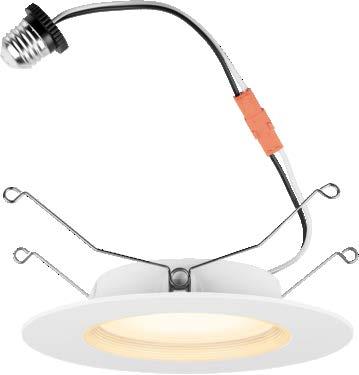


FIRE RATED SLIM BAFFLE DOWNLIGHTS
The new Fire Rated Slim Baffle Downlight is a low-profile, easy-to-install fixture that mounts directly into the ceiling, requiring no can. Installers can choose multiple CCTs to suit various application needs. The flush-style fixture is ENERGY STAR, wet location, and IC-rated and supports Title 24. Its edge-lit optics providing an even, low glare illumination with an outstanding color rendering.

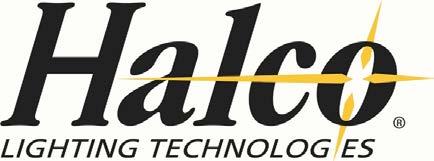
ESSENTIAL ROUND HIGHBAY
The Essential Round Highbay from Halco offers multiple mounting options, an easy plug-and-play motion sensor accessory, and DLC 5.1 Premium certification. Its "driver on top" design improves heat dissipation, while 6kV driver surge protection enhances reliability.
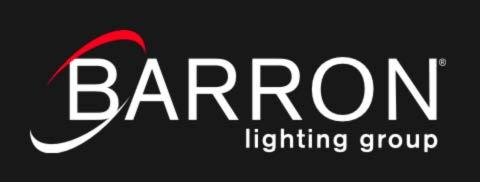
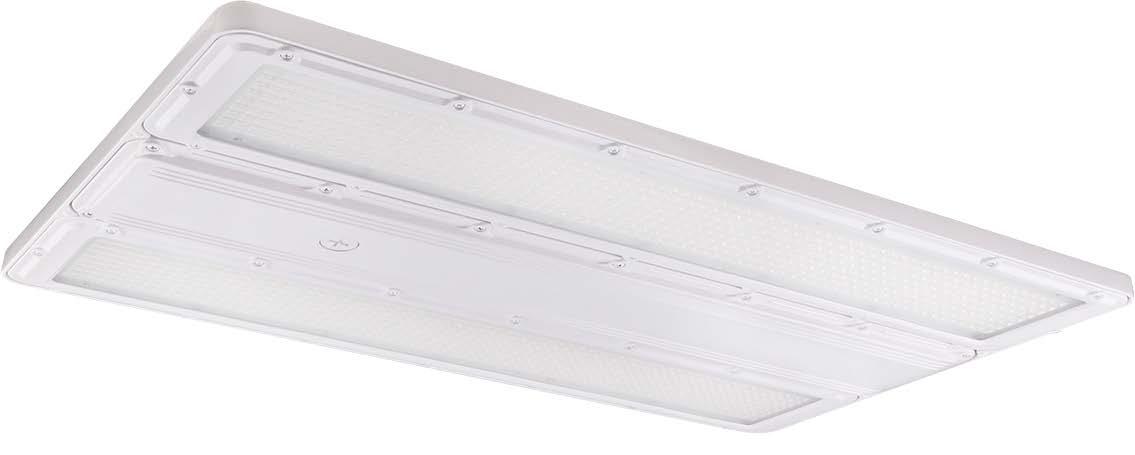

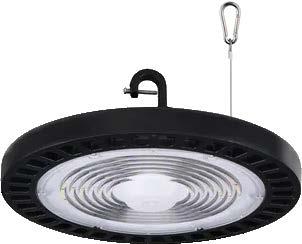
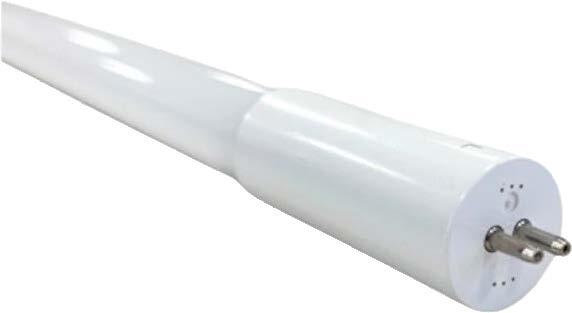

EARTHBULB TYPE B DIRECT WIRE LINEAR LED T5
EarthTronics’ 5.8-inch, 12.5-watt EarthBulb Type B Direct Wire Linear LED T5 offers five color temperature options and 1800 lumens of energyefficient light. Ideal for commercial and architectural spaces, it’s easy to install without ballasts or drivers. It features high-color rendering, long lifespan, and operates in extreme temperatures, backed by a fiveyear warranty.
NHBL SERIES NSF-CERTIFIED LED LINEAR HIGH BAY
The new NHBL Series NSF-Certified LED Linear High Bay from Barron Lighting Group is a high-performance, durable lighting solution designed for harsh environments. NSF certified and IP69K- and NEMA 4X-rated, it offers power and CCT switchable flexibility, up to 170 lumens per watt, and plug-and-play sensor integration. DLC Premium qualified, it ensures energy savings and rebate eligibility.

DRTR ROTATABLE DOWNLIGHT
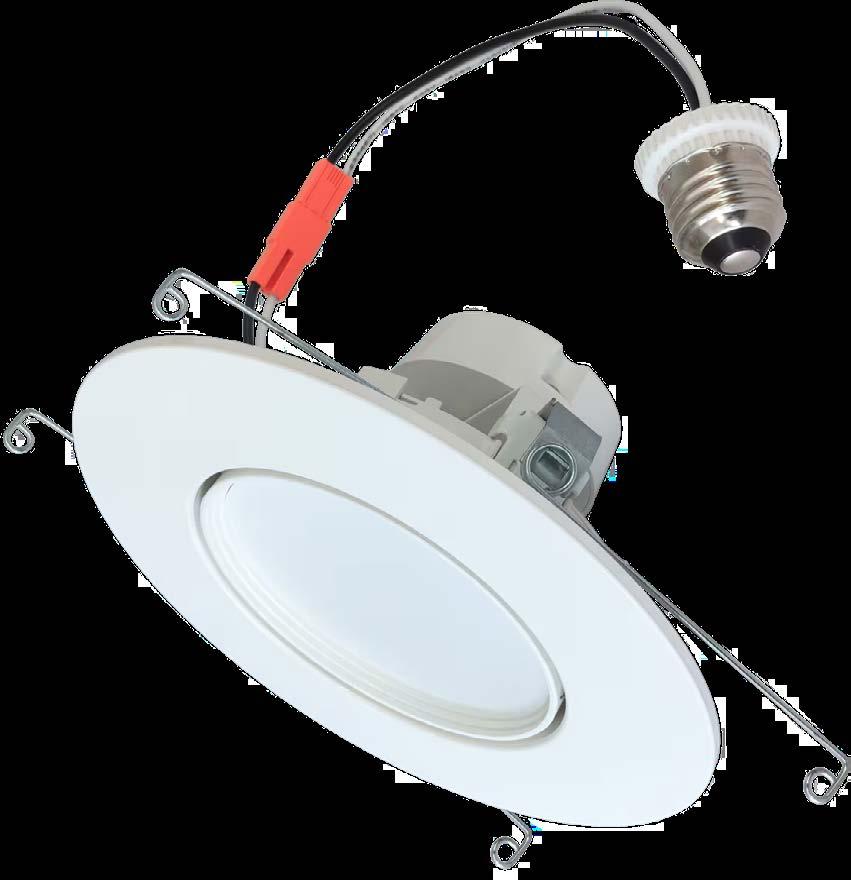
The DRTR Rotatable Downlight Retrofit offers ENERGY STAR certification, 5 CCT color options, and 360° rotation with tilt for versatile accent or display lighting. Available in 4” and 6” sizes, it features easy installation with an E26 socket adaptor, Triac dimming, and a 35,000-hour LED life.
CHICAGO, Here We Come!
NALMCO Heads to the Windy City for the 2025 Spring Seminar
HOTEL INFORMATION
ˍ The Westin O'Hare 6100 N River Rd, Rosemont, IL 60018
ˍ To reserve a room, please click here
REGISTRATION
ˍ Registration is open. To reserve your spot, click here.
ˍ Member pricing: $400*/$500
ˍ Non-member pricing: $500*/$600
ˍ Non-industry guest: $100
* Represents early-bird pricing. Register by Monday, February 17th to receive early-bird pricing.
2025 SPRING SEMINAR SCHEDULE*
*Subject to change to meet the needs of speakers, attendees or host. Certification hours: Attendees will earn 14.5 recertification credit hours for their NALMCO certifications. Contact: Kerigan Hunziker meetings@nalmco.org or (515) 334-1049
TUESDAY P MARCH 4, 2025 LOCATION
8:00 a.m.–12:00 p.m. CLMC Review Session Higgins (Lobby Level)
2:00–4:30 p.m. CLMC Exam Higgins (Lobby Level)
2:00–4:00 p.m. Registration Open LaSalle Foyer (Lobby Level)
4:00–6:00 p.m. Tuesday Evening Meet and Greet LaSalle Foyer (Lobby Level)
WEDNESDAY P MARCH 5, 2025 LOCATION
7:00 – 8: 00 a.m. Breakfast Available LaSalle Foyer (Lobby Level)
7:00 a.m. Registration Open LaSalle Foyer (Lobby Level)
7:00–9:00 a.m. Learning Lab Speakers Set-Up Rosemont 1, 2, 3, 4 (3rd Floor LaSalle C (Lobby Level)
7:30–8:00 a.m. Welcome and Introductions LaSalle A&B
8:00–8: 45 a.m.

General Session: US Trade Policy: A Lighting Perspective, Tanya Hernandez, Vice President of Government & Industry Relations, Acuity Brands LaSalle A&B
8:45–9:00 a.m. Head to First Learning Lab
9:00–11:45 a.m.
Learning Labs Part I
Labs run concurrently for 25-minute increments, with a 10-minute change between rooms so that each exhibitor presents a lab 5 times, and each attendee has time to participate in all 5 labs.
9:00–9:25 a.m. First Lab Session
9:25–9:35 a.m. Rotate
9:35–10:00 a.m. Second Lab Session
10:00–10:10 a.m. Rotate
10:10–10:35 a.m. Third Lab Session
10:35–10:45 a.m. Rotate
10:45 –11:10 a.m. Fourth Lab Session
11:10–11:20 a.m. Rotate
11:20–11:45 a.m. Fifth Lab Session
11:45 a.m.–1:15 p.m. Boxed Lunch
11:45 a.m.–1:15 p.m. Learning Lab Speakers Set-Up Part II
Learning Labs Part II
1:15–4:05 p.m.
Labs run concurrently for 25-minute increments, with a 10-minute change between rooms so that each exhibitor presents a lab 5 times, and each attendee has time to participate in all 5 labs.
1:15–1:45 p.m. First Lab Session
1:45–1:55 p.m. Rotate
1:55–2:20 p.m. Second Lab Session
2:20–2:30 p.m. Rotate
2:30-2:55 p.m. Third Lab Session
2:55–3:05 p.m. Rotate
3:05–3:30 p.m. Fourth Lab Session
3:30–3:40 p.m. Rotate
3:40–4:05 p.m. Fifth Lab Session
Rosemont 1, 2, 3, 4 (3rd Floor) LaSalle C (Lobby Level)
LaSalle A&B
Rosemont 1, 2, 3, 4 (3rd Floor) LaSalle C (Lobby Level)
Rosemont 1, 2, 3, 4 (3rd Floor) LaSalle C (Lobby Level)
4:05–4:30 p.m. Wrap Up/Closing Comments LaSalle A&B
4:30-6:05 p.m. Free time for attendees Westin O’Hare
6:05–6:15 p.m.
6:15 p.m.
Board Shuttle from Hotel to Evening Reception (All attendees) Lobby
Shuttle Departs Hotel for Evening Reception (All attendees) Lobby
6:30–8:30 p.m. Reception at TBD (All Attendees) Off-Site
8:30 p.m.
Board Shuttle and back to Hotel (All attendees) Off-Site
THURSDAY P MARCH 6, 2025 LOCATION
8:00 -9:00 a.m. Breakfast Available LaSalle Foyer (Lobby Level)
9:15–9:30 a.m. Start loading shuttle for tour of Acuity Facility (General Members only) Lobby
9:30 a.m.
Shuttle departs hotel for Acuity Lobby
10:00 a.m.–12:30 p.m. General Members tour of Acuity Facility Acuity Brands
12:30 p.m.–1:30 p.m. General Member lunch at Acuity Facility Acuity Brands
1:30 p.m.
Board Shuttle from Acuity to Westin O’Hare Acuity Brands
2:00 p.m.–4:00 p.m. Free time for General Members Westin O’Hare
4:00 p.m.–6:00 p.m. Evening Reception (General Members with Acuity Team) LaSalle Ballroom
Tanya Hernandez is Vice President of Government & Industry Relations at Acuity Brands. She actively monitors, evaluates and influences legislative and regulatory activities impacting lighting, lighting controls, building management solutions, and location-aware applications. She regularly consults on proposed rulemakings while building and nurturing relationships with industry associations, regulatory bodies, customers, suppliers, utilities, program specification and standards development organizations.
Tanya’s career has spanned diverse areas of the lighting industry including serving as lead technical consultant on the lamp and luminaires specification development for the EPA ENERGY STAR Lighting Program, design principal and owner of HART Design Group, and as a certification engineer at Underwriters Laboratories (UL). She is a sought-after speaker, having presented at the Illuminating Engineering Society (IES) Annual Conference, LightFair, and the World Energy Engineering Congress. Tanya is the pastChair of the National Electrical Manufacturers Association’s (NEMA) Lighting System Division, has served three terms as President of the IES Raleigh Section, several years as a member of the IES Testing Procedures Committee and is currently an at-large member of the IES Board of Directors.
Tanya earned a B.S. in electrical engineering from North Carolina State University, is a registered professional engineer (PE) since 2000, and is lighting certified (LC) with more than 25 years of experience in the lighting industry.
Session Title: US Trade Policy: A Lighting Perspective
NEWThis Year!
New format
All learning labs are on Wednesday, followed by the Acuity Brands tour for General Members on Thursday. An additional reception with the Acuity team has been added on Thursday for general members/non-member equivalents.

SPEAKER
Tanya
The address will include a review of the new U.S. Administration’s trade objectives as they relate to lighting, including the anticipated direction of tariffs, incentivizing domestic manufacturing, and regulations impacting product domestic content requirements, e.g. Build America Buy America (BABA) and Buy American (BAA). Hernandez
NALMCO Gives Back
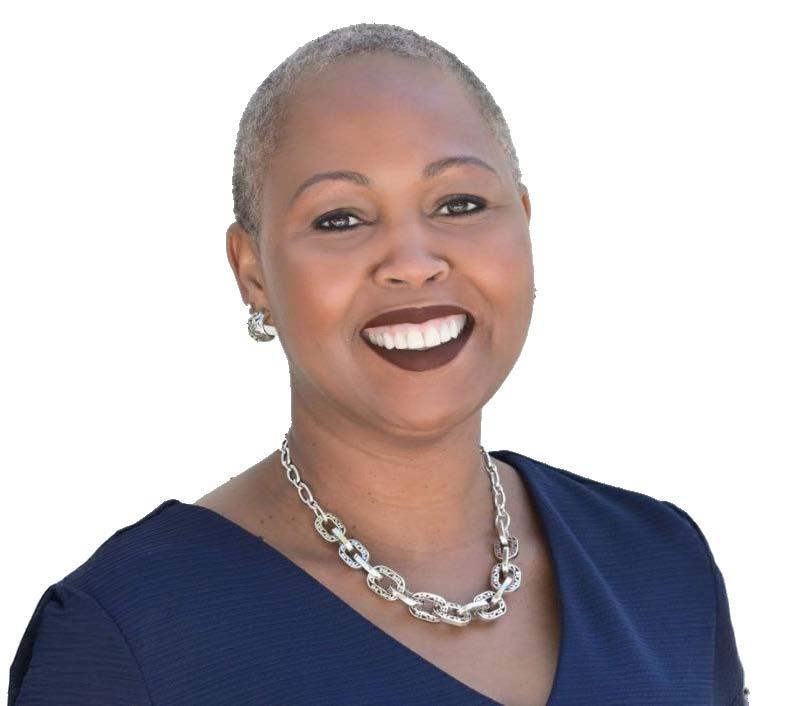
Introducing a brand-new initiative –NALMCO Gives Back – to support the communities that support our events. The initiative was originally thought of by Kevin Heid, to ultimately give back to the communities that support our events. This year, we are partnering with Milwaukee Public Schools Youth Apprenticeship Program. Through this partnership, NALMCO and Acuity are providing essential resources for the electrical track of the Program. These resources include access to NALMCO’s Certified Apprentice Lighting Technician certification coursework and Acuity Academy training materials. Additionally, Acuity has donated LED lighting and lighting controls equipment, offering students hands-on learning during their in-school training and better preparing them for future on-the-job experiences.
For more information about NALMCO Gives Back, please click here. And special thanks to Kevin Heid for spearheading the initiative.
NALMCO Spring Seminar Learning Labs
PRESENTER SESSION TITLE
Acuity Brands
Advanced Controls – Who’s Interested and How To Sell It
Avi-on Labs, Inc. The Dark Side of Lighting Controls
LEDVANCE
Exterior Lighting – Current LED Technology: Maintenance, Retrofit and ReLED
Light Pole Systems Common Light Pole Order Mistakes
Building Management Platform
LSI Industries, Inc. Trial and Error; The Need for Photometrics
Lutron
Demystifying Fluorescent Retrofits: Helping Clients Upgrade Fluorescent Lighting While Preserving Existing Fixtures
RAB Lighting, Inc. Introduction to Circadian Lighting
SnapCount Is the LED Market Becoming Saturated? Key Data-Driven Insights and Ways To Prepare
U.S. Architectural Lighting / Sun Valley Lighting Buy America Build America – What Does It Mean?
SESSION DESCRIPTION
A high level overview of advanced controls, diving into where and how they’re used successfully, specifically focusing on stakeholders and messaging.
While lighting controls have been used for decades and have tremendous energy and non-energy benefits, they are often considered the black sheep, used out of obligation as opposed to the value they add. In this presentation, you will hear from a panel of industry experts, bringing you a range of perspectives focusing on the issues and limitations associated with the lighting control technologies, applications/implementations, installations and programming, and how to avoid common mistakes.
Review of current LED exterior lighting technology and how it relates to maintenance, retrofit and reLED applications.
This session will cover the common issues we hear from our customers, focusing on ordering/specifying a new or replacement pole, with the goal of providing attendees a check list of items to ensure the job is efficient and profitable. We will briefly cover the simpler issues like size, shape, color before exploring more in-depth topics like footing bolt pattern vs direct bury, strength requirements, wind zone maps (ASCE/SEI 7-22 vs Florida building code), fixture mounting options, additional accessories to consider, and shipping and unloading requirements.
Lighting controls are no longer just for controlling lighting. They are also a platform for integrating other energy conservation measures, reporting and managing energy usage and including measurement and verification of savings. This session will review the latest improvements in lighting control integration with building management systems.
Why there is a need for photometrics in lighting, with best practices and processes to achieve a safe and wellilluminated project.
Understand how to become a trusted advisor for guiding clients effectively through the transition to smart building control systems in the post-fluorescent era. Learn how to assess lighting upgrades, including the transition from fluorescent to LED, while considering sustainability and fixture types.
Explore the benefits of circadian lighting and the ease of implementation for various applications. Learn about our body’s natural circadian rhythm and how electric light can help to improve our lives.
The LED retrofit industry has been growing strong for more than a decade, and many worry that we are nearing the point of saturation. This session is designed to take a realistic look at the LED adoption cycle, opportunities for upgrading earlier generation LED systems, the growing role of advanced controls, and how to future proof your business by preparing for the larger energy transition and electrification opportunities ahead.
Explore the similarities and differences between BAA and BABA, and how these provisions affect the energy market.
Linmore LED Using Lighting Systems as a
MEMBER
LEDVANCE
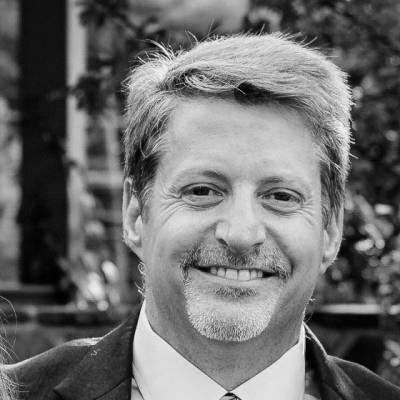
Graham Wark was appointed Vice President of Trade Sales.
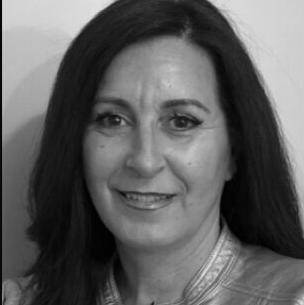
Martina Mercurio rejoined LEDVANCE Canada in Senior Sales Representative, Central Region.
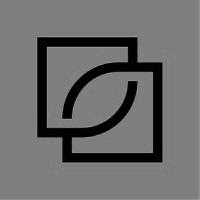
LEDVANCE has acquired loblicht GmbH, a German leader in high-end lighting design.
ACUITY BRANDS

Mark Killoran appointed as Director of Distribution Sales, Canada.
BARRON LIGHTING GROUP
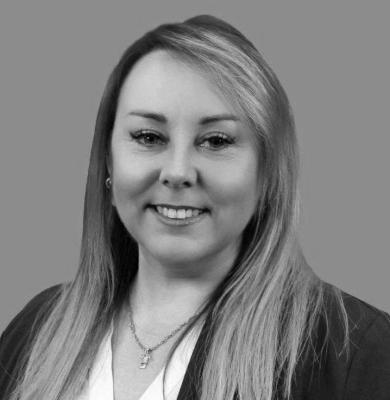
Claudia Campeau has been promoted to Director of Product Strategy and Integration.

Brad Young was promoted to Southeast Regional Sales Manager & National Sales Champion for Lamps & Tubes.
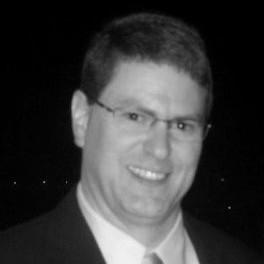
Peter Stratemeyer returned to MaxLite as Senior Director of Product Management.
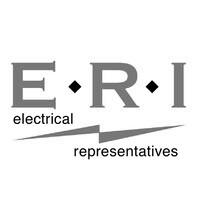
E.R.I. Electrical Representatives will serve as MaxLite’s rep in Southern California and Las Vegas.
ESPEN TECHNOLOGY
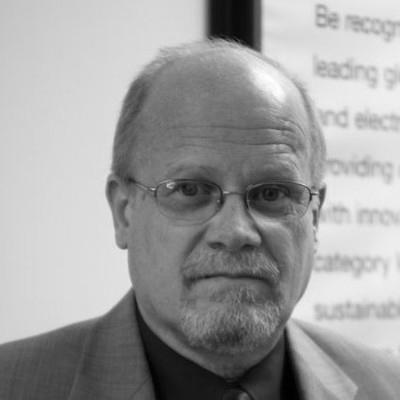

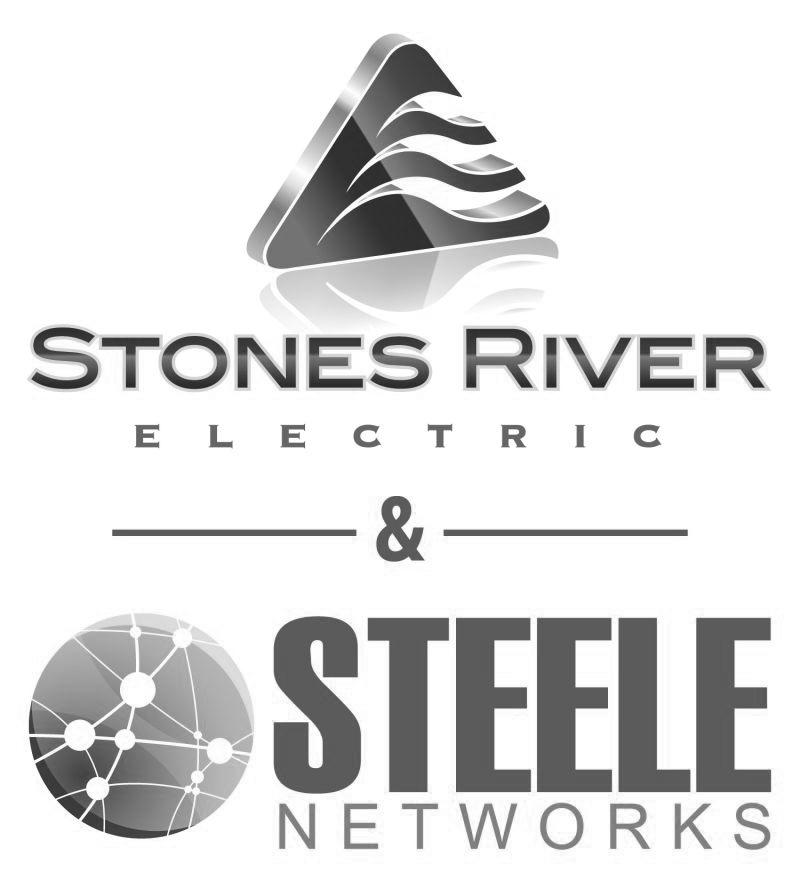

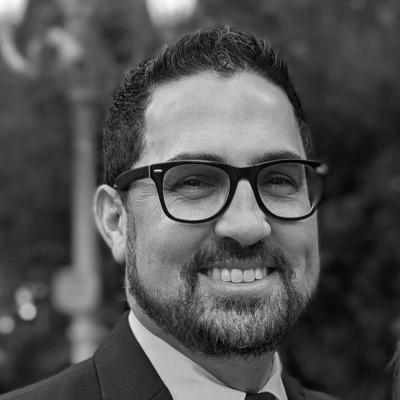
Jason
been promoted to Senior Vice President of Sales & Marketing.
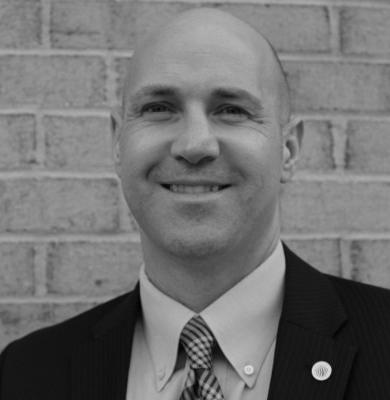
Chris Kaiser joined Mantis Innovation as their new Vice President of Sales, Projects West.
STONES RIVER ELECTRIC
Tara Nkila was promoted to Regional Sales Manager for California.
Isaac Jaten was appointed as new Regional Sales ManagerMountain States.
Flemming Jensen transitioned to the role of Vice President of Strategic Business.
Samuelian, LC has
Stones River Electric has acquired Steele Networks, a leader in IT and systems security. MANTIS
NEW CERTIFICATIONS
CERTIFIED APPRENTICE
LIGHTING TECHNICIAN™
Brighter Solutions, L.L.C.
Brano Lukic, CALT
Dale Robb, CALT
Candela Systems Corporation
Dale Robb, CALT
Colorado Lighting
Vitalii Lukov, CALT
Brian Nipp, CALT
Kip Norris, CALT
Scott Riehm, CALT
Theodore Smith, CALT
David Valdez, CALT
Cooper Electric Supply Co., Inc.
Amber Edwards, CALT
Energy Management
Collaborative
Dylan Kyro, CALT
Craig Moseley, CALT
Evergreen Energy Partners
Zachary Jeffers, CALT
Have Lights Will Travel
Jacob Retana, CALT
Springfield Electric
Jose Calderon, CALT
Sunlight Electric
Isaac Grijalva, CALT
Sunset Lighting
Rachel Ronquillo, CALT
Vista Universal, Inc.
Gabriel Bolanos, CALT
CERTIFIED SENIOR LIGHTING TECHNICIAN™
Lumatech
Anthony Carmack, CSLT
CERTIFIED LIGHTING CONTROLS PROFESSIONAL™
Balanced Dynamics, Inc.
Ken Chun, CLCP
Centrica Business Solutions
Eugene Hong, CLCP
DesignLights Consortium
Jason Jeunnette, CLCP
Energy Management
Collaborative
Christopher Henningsen, CSLT, CLCP
Evergreen Consulting
John Murphy, CALT, CLCP
Lighting Services Inc.
Chris Speraw, CLCP
Linmore LED
Lawrence Ryan, CSLT, CLCP, CLMC
Pacific Energy Concepts (PEC)
Gary Pierce, CSLT, CLCP
Power Design Inc
Maria A Benitez, CLCP
Salex Inc.
Deven Bhavsar, CLCP
Kaushal Soni, CLCP
San Diego Lighting Associates
Philip Robledo, CLCP
Lincoln Tadewald, CLCP
SDLA
Nathan Hersey, CLCP
Shepherd Electric Supply
Jeff Miklaszewski, CLCP
United Electric Supply
Ryan Taylor, CLCP
WESCO
Gregory Hermanowycz, CLCP
CERTIFIED
SENIOR GUV TECHNICIAN
Aether Technologies
Jeff Glover, CS-GUVT
Britton Hopkins, CS-GUVT
Noble Electric Solutions
Jeff Engelmann, CS-GUVT
Safe Air UV LLC
Adam Skelton, CS-GUVT
CERTIFIED GUV MANAGEMENT
PROFESSIONAL (C-GUVMP)
Lumalier
Derrick Sears, C-GUVMP
NEW MEMBER
GENERAL COMPANY MEMBER
2B LIGHTING LLC
JOIN DATE: 1/3/2025
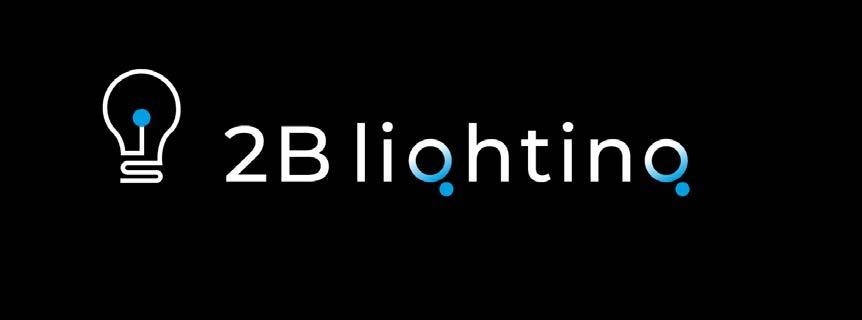
YOU GET A TARIFF, YOU GET A TARIFF
By Parker Allen
At the end of 2024, we noted the uncertainty surrounding several key situations, the first of which was the ongoing labor dispute between the International Longshoremen’s Association (ILA) and the United States Maritime Alliance (USMX). The two parties reached a tentative agreement on October 3, 2024, putting an end to the three-day strike and postponing the deadline to January 15 of this year.1
This time around, we didn’t have to wait until the final hour – on January 8, a new six-year master contract was reached. With a strike averted, the uptick in container rates that we saw in December is expected to reverse, although, as electrical distributor Border States noted in their recent “Supply Chain Update,” rates are still almost 50% higher than they were at this time a year ago. The update continued, “The ocean freight market has ongoing risks that will be present in 2025, most notably proposed tariff legislation on imports, ongoing geopolitical disruptions in the Middle East and Ukraine/Russia and the upcoming Chinese Lunar New Year.”i
About those tariffs… The 25% tariffs against Mexico and

Canada were set to take effect on February 1st, as was a 10% tariff on all Chinese imports. On February 3rd, the President put a pause on the proposed tariffs on our North American neighbors,2 but the tax aimed at China went into effect a day later, and China quickly retaliated.3
American transportation giant C.H. Robinson noted that, in a recent survey, customers cited “changes in tariffs and trade policy” as the biggest risk in the coming year. The company update continued, “Shippers say the top five ways they are planning for changes in tariffs and trade policy are through identifying where they can switch sourcing to save money, analyzing customs data, evaluating cross-border strategies, running risk scenarios and lowering their dependence on Chinese imports.4
The Chinese Lunar New Year will cause its usual disruptions, but the bigger story with regards to China – the country’s trade relations with the U.S. – might take months to play out. In such a time of uncertainty, it is wise to consider all options when it comes to sourcing materials and stocking inventory. P
1 “Supply Chain Update” (20 January 2025). Border States. https://solutions.borderstates.com/newsletter/supply-chain-update-january-2025/
2 Boak, J. Gillies, R. and Sánchez, F. “Trump agrees to pause tariffs on Canada and Mexico after they pledge to boost border enforcement” (3 February 2025). The Associated Press. https://apnews.com/article/trump-tariffs-canada-mexico-china-sheinbaum-trudeau-017efa8c3343b8d2a9444f7e65356ae9
3 Mistreanu, S. “A timeline of US-China tit-for-tat tariffs since Trump’s first term” (10 February 2025). The Associated Press. https://apnews.com/article/china-us-tariffs-timelinetrump-xi-08b5d468e61ba15e760563ef0186b2bb
4 “C.H. Robinson Announces Resources to Help Shippers Navigate Changes in Tariff and Trade Policy, As Survey Shows it’s a Top Concern” (10 February 2025). C.H. Robinson. https://www.chrobinson.com/en-us/about-us/newsroom/press-releases/2025/chrobinson-announces-resources-to-help-shippers-with-tariffs/
AD INDEX

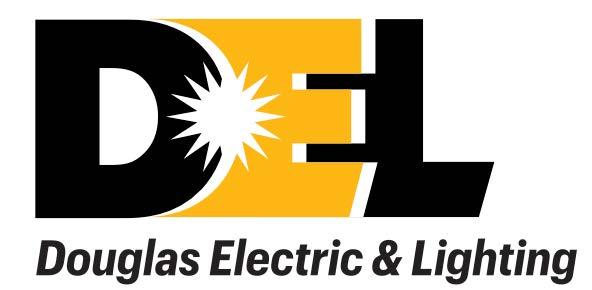



Jared Blackney Up Close with
By Shirley Coyle, LC
Asked for his advice to people coming into the industry, Jared is firm, saying, “Understand all technologies, not just LED… if you don’t know what you’re replacing, you’re not going to

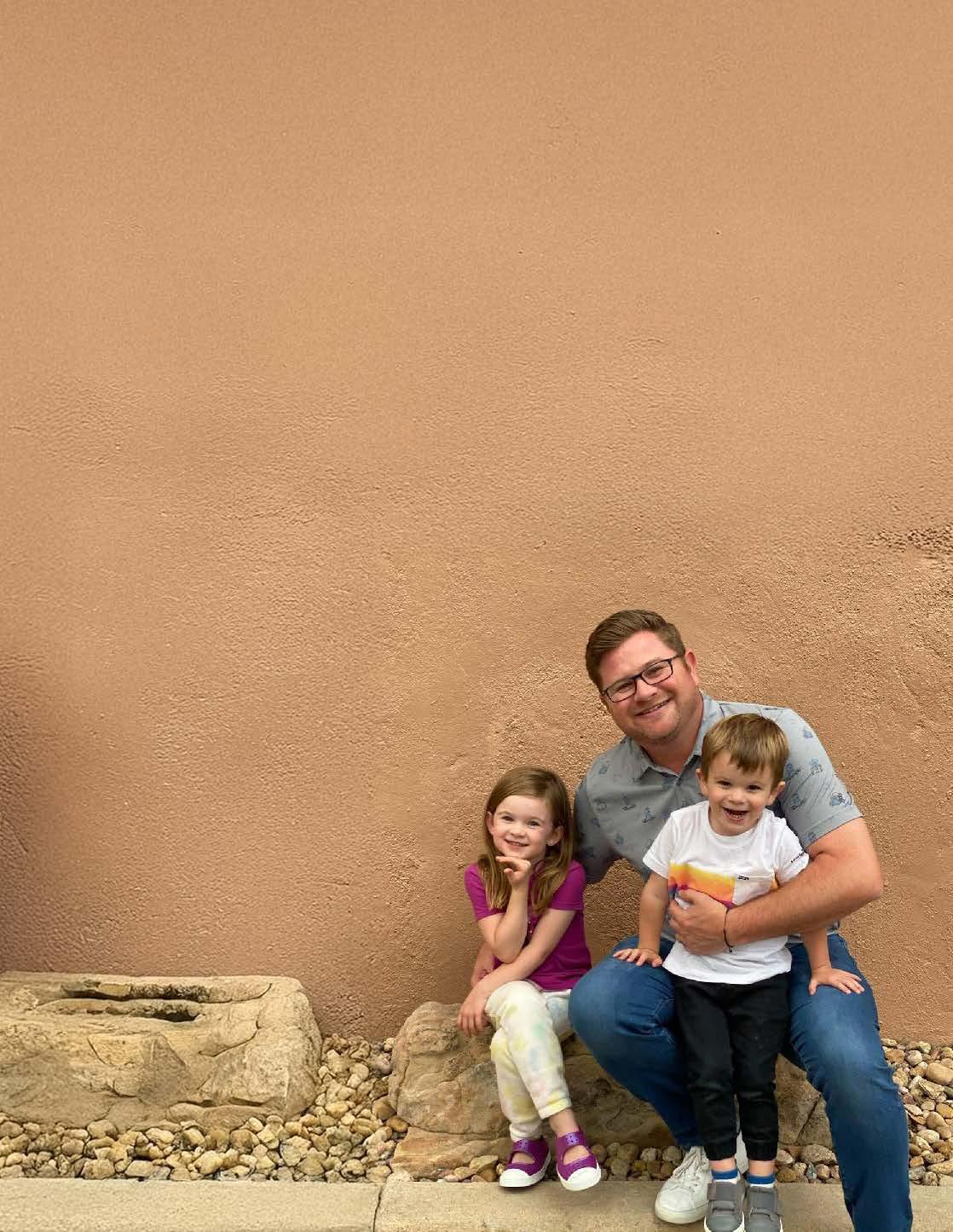
COMING IN MARCH
Theme: Workplace Safety & Health
Feature Article: "Lighting's Role in Enhancing Occupational Health and Safety in Facilities"
Technical Insights: Maintaining Lighting for Maximum Health Benefits in the Workplace
Case Study: How Proper Maintenance Reduces Glare and Fatigue in Industrial Settings
Trend Watch: UV-C Disinfection
Lighting: Balancing Safety with Maintenance
Product Focus: Safety Lighting Systems for Industrial and Commercial Use

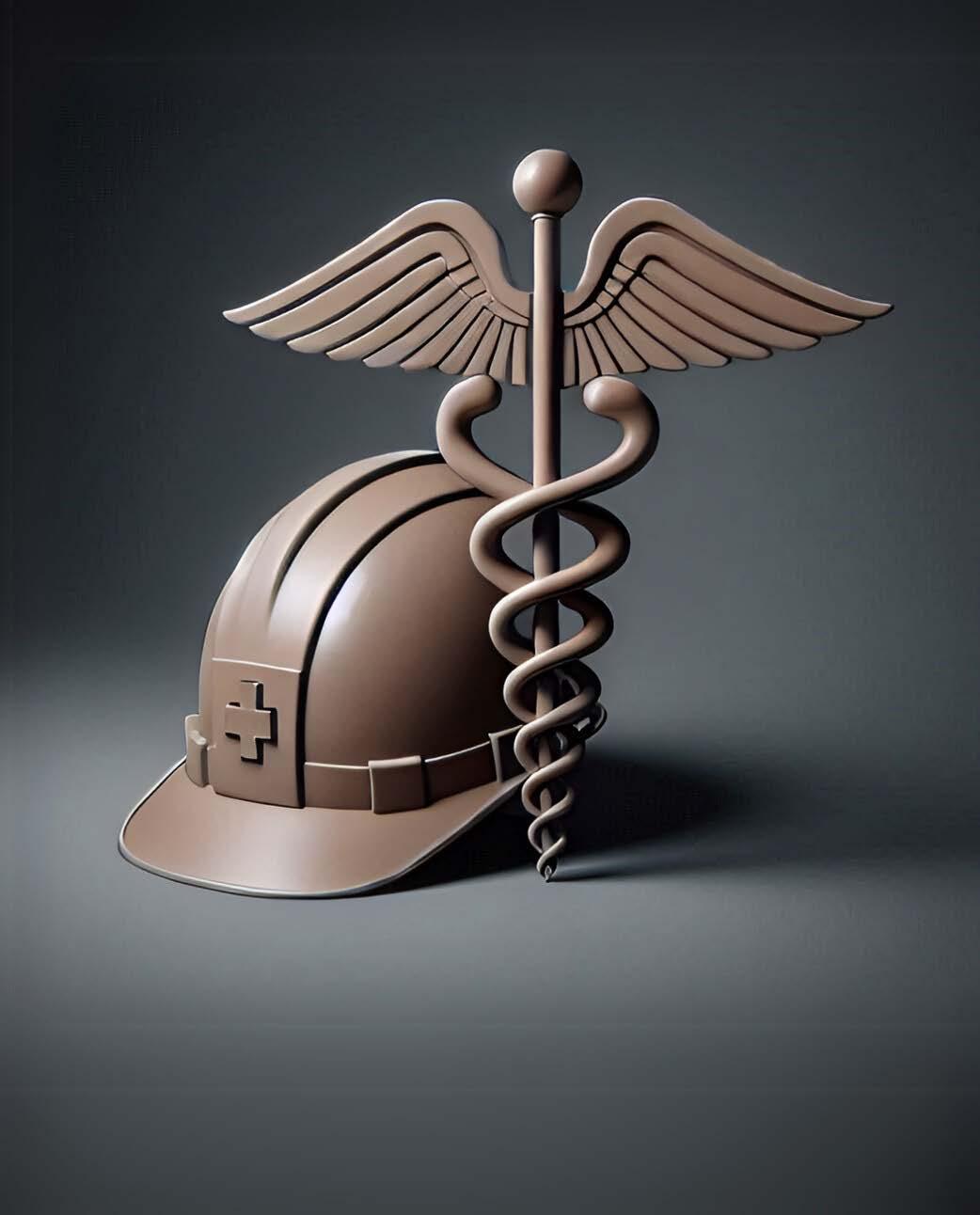


OCTOBER 19-22, 2025




